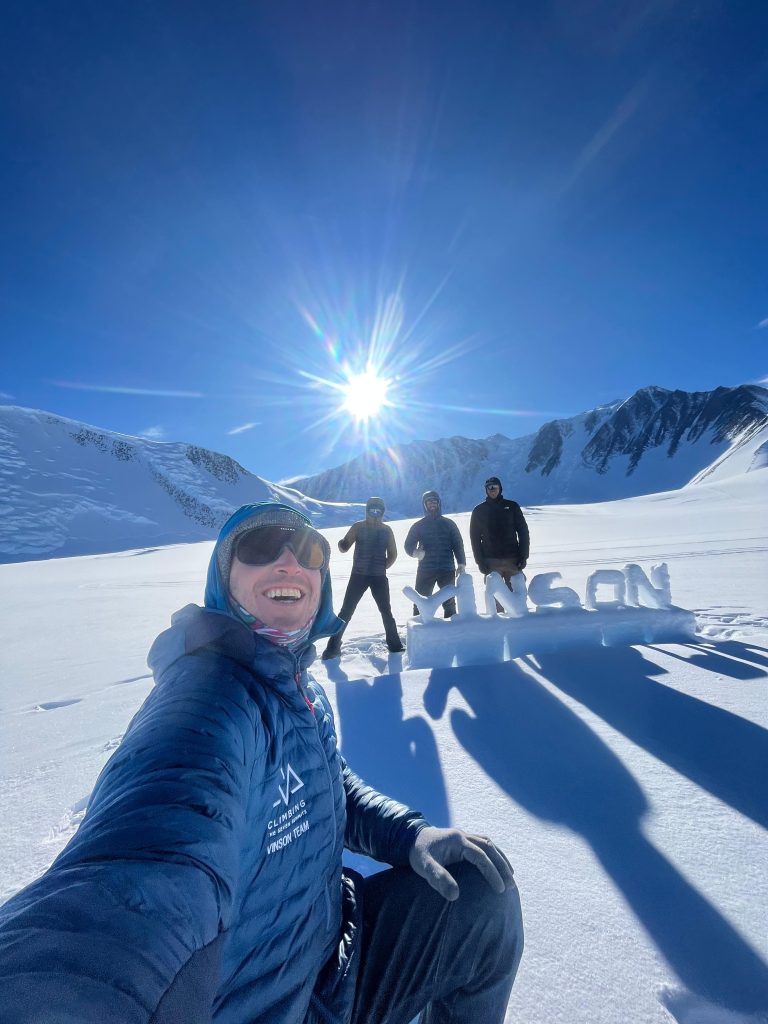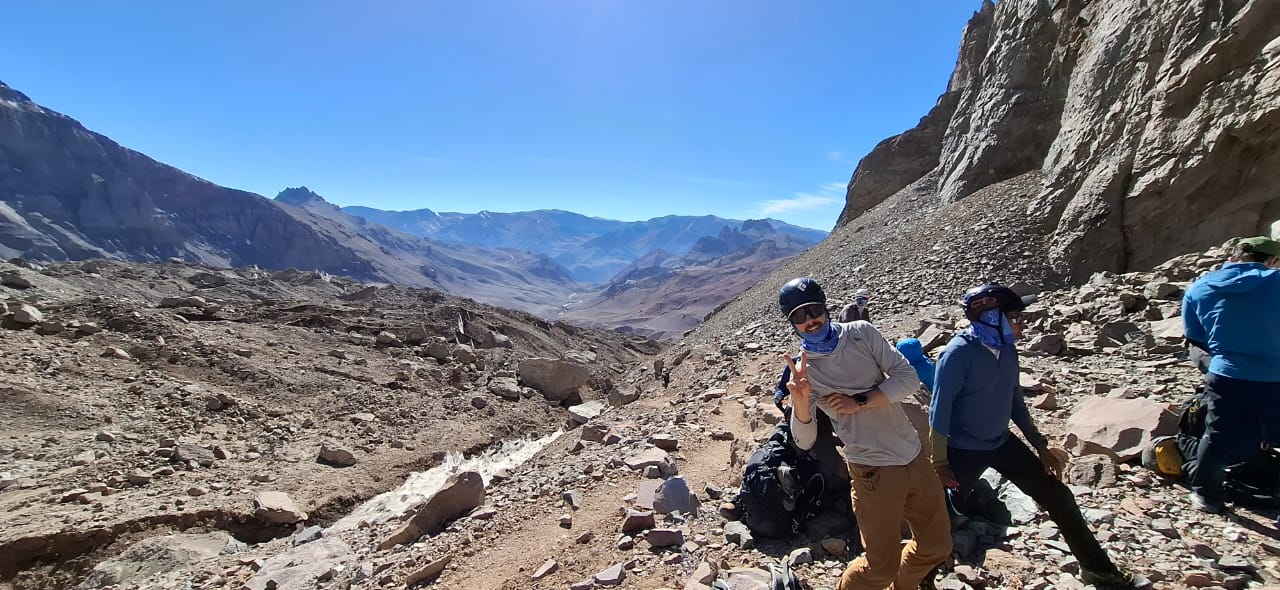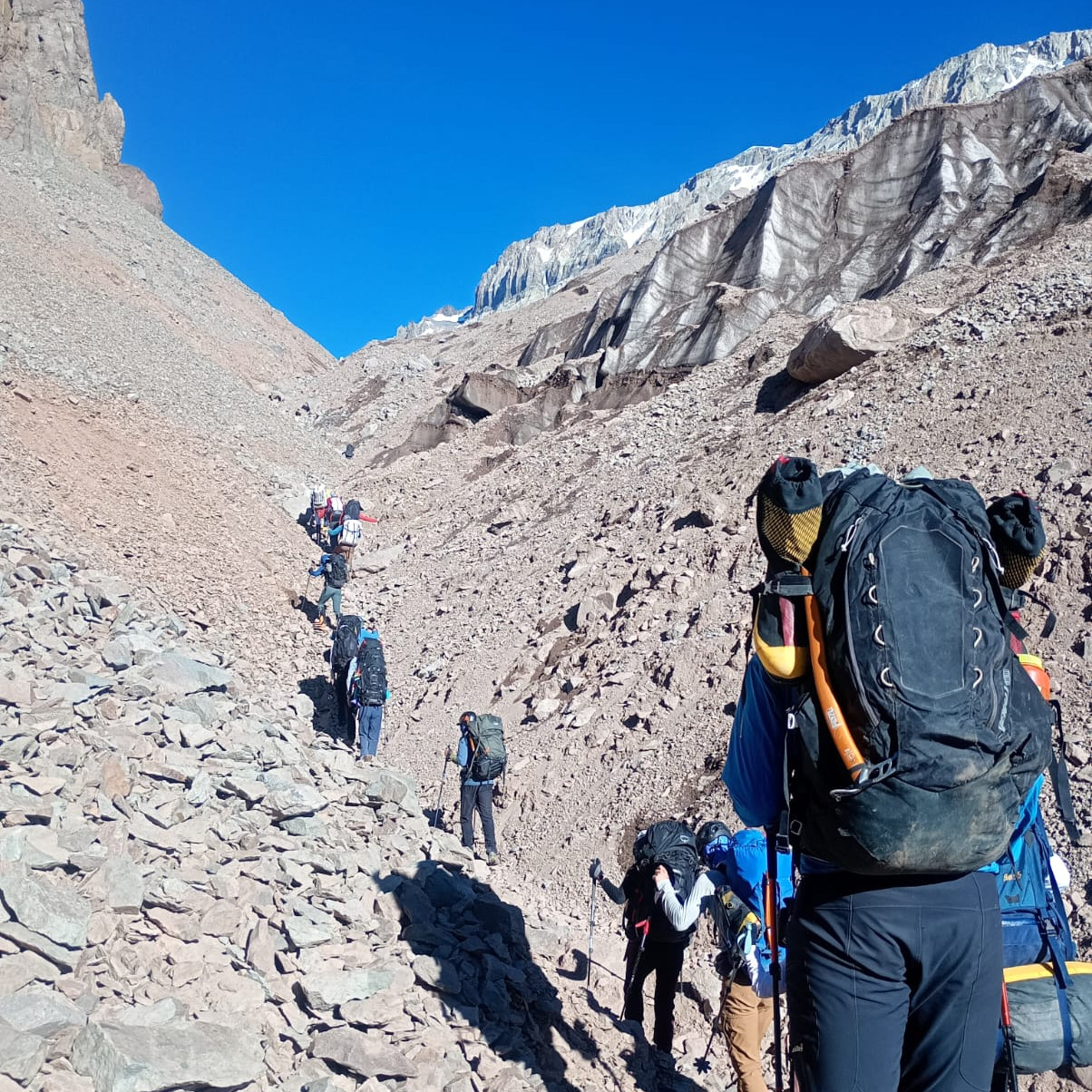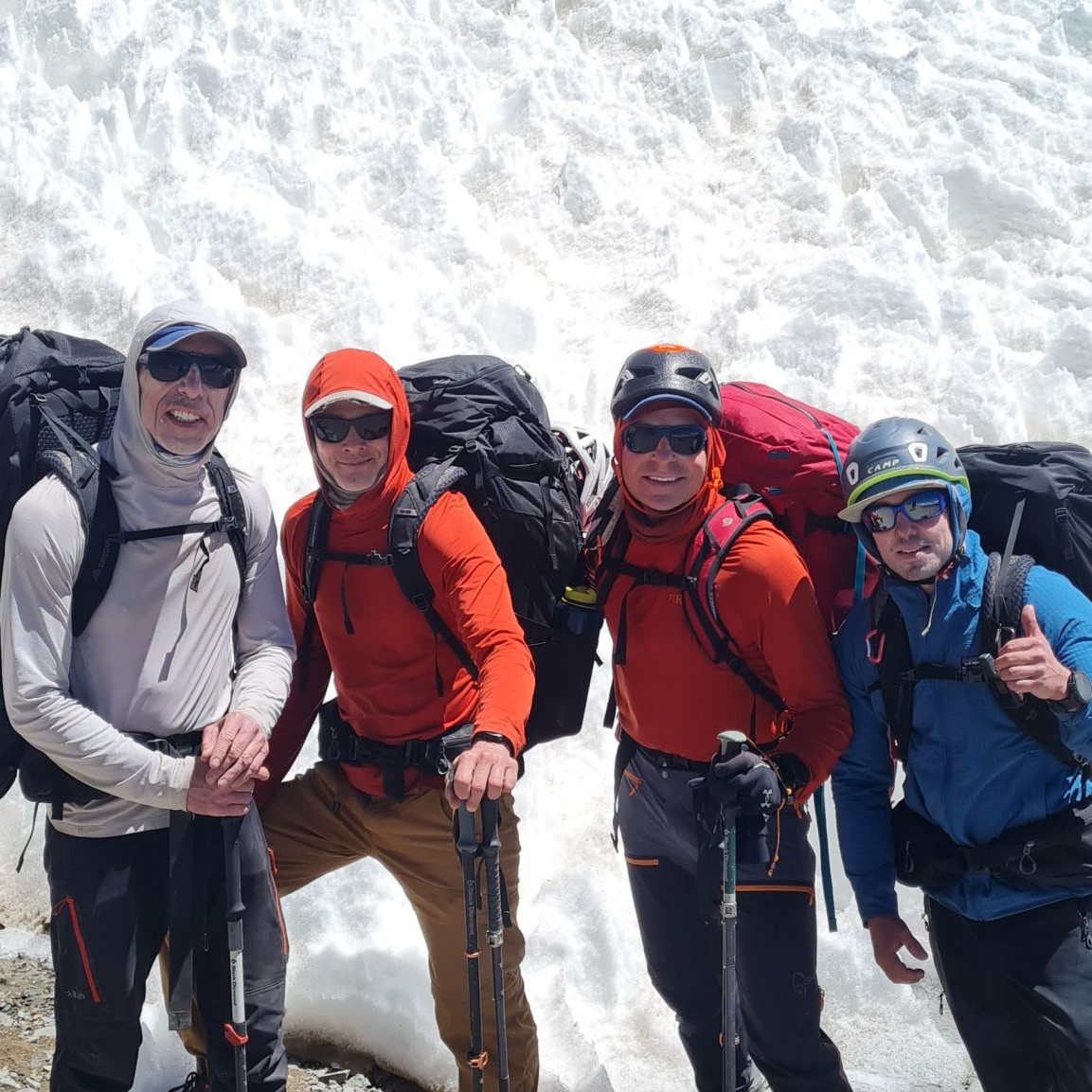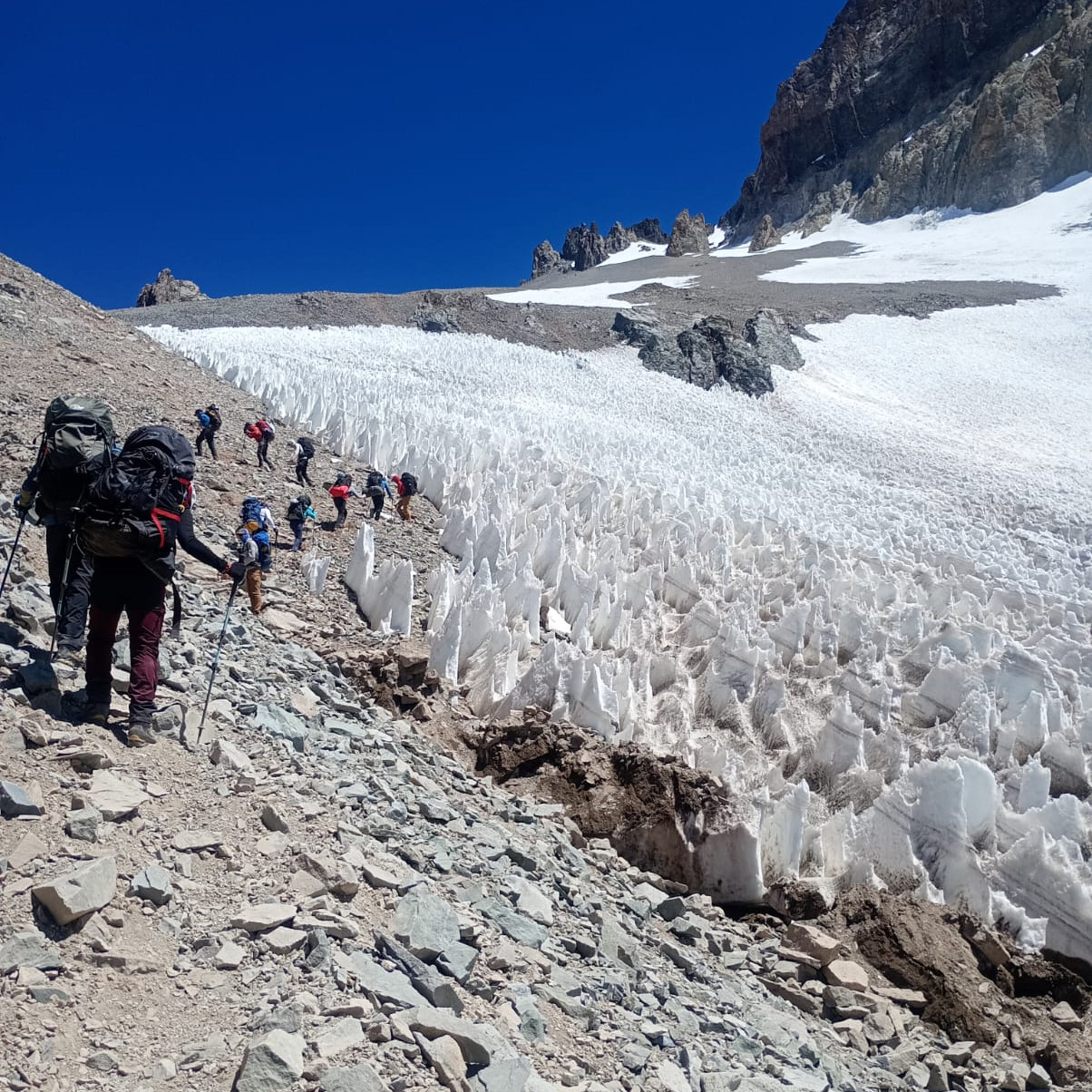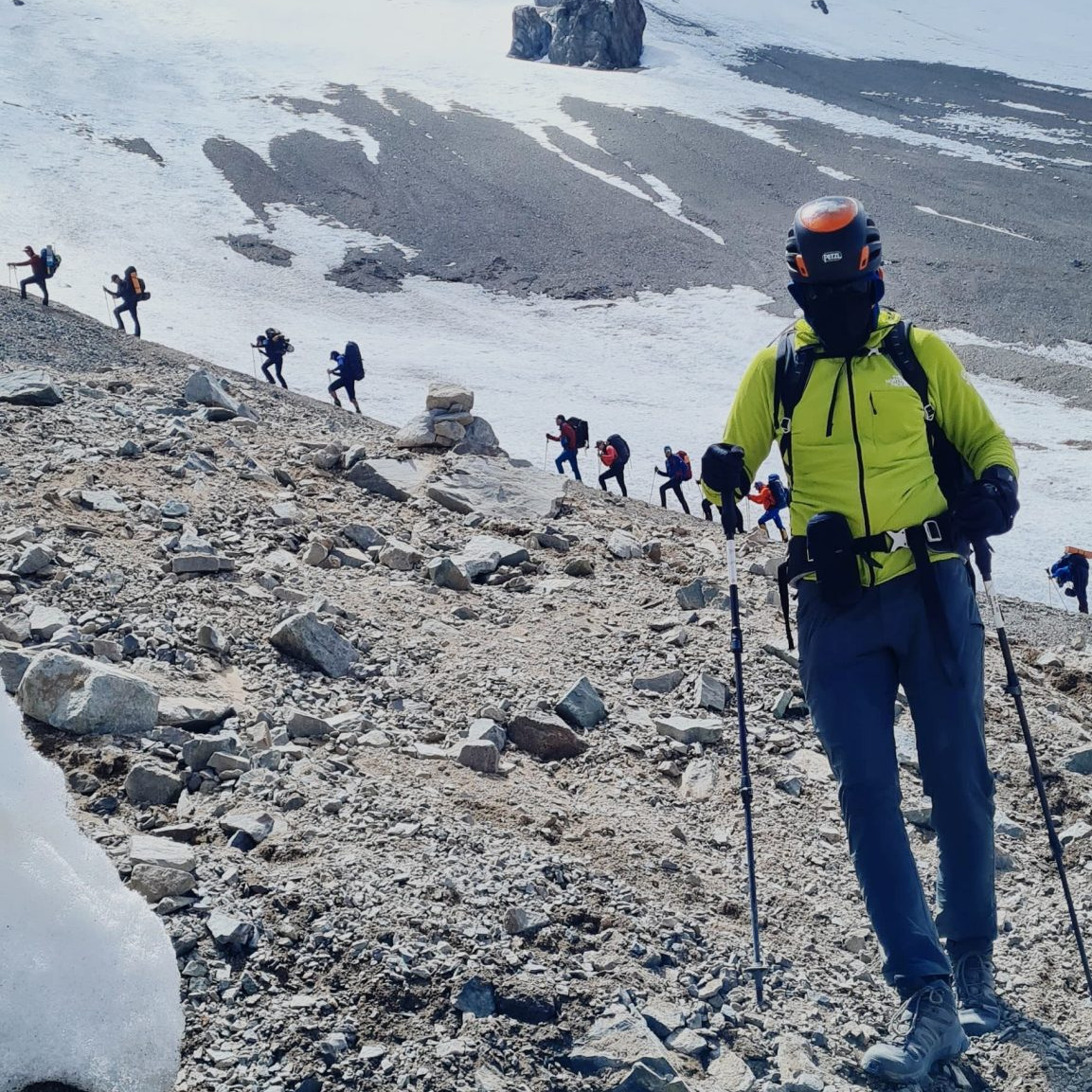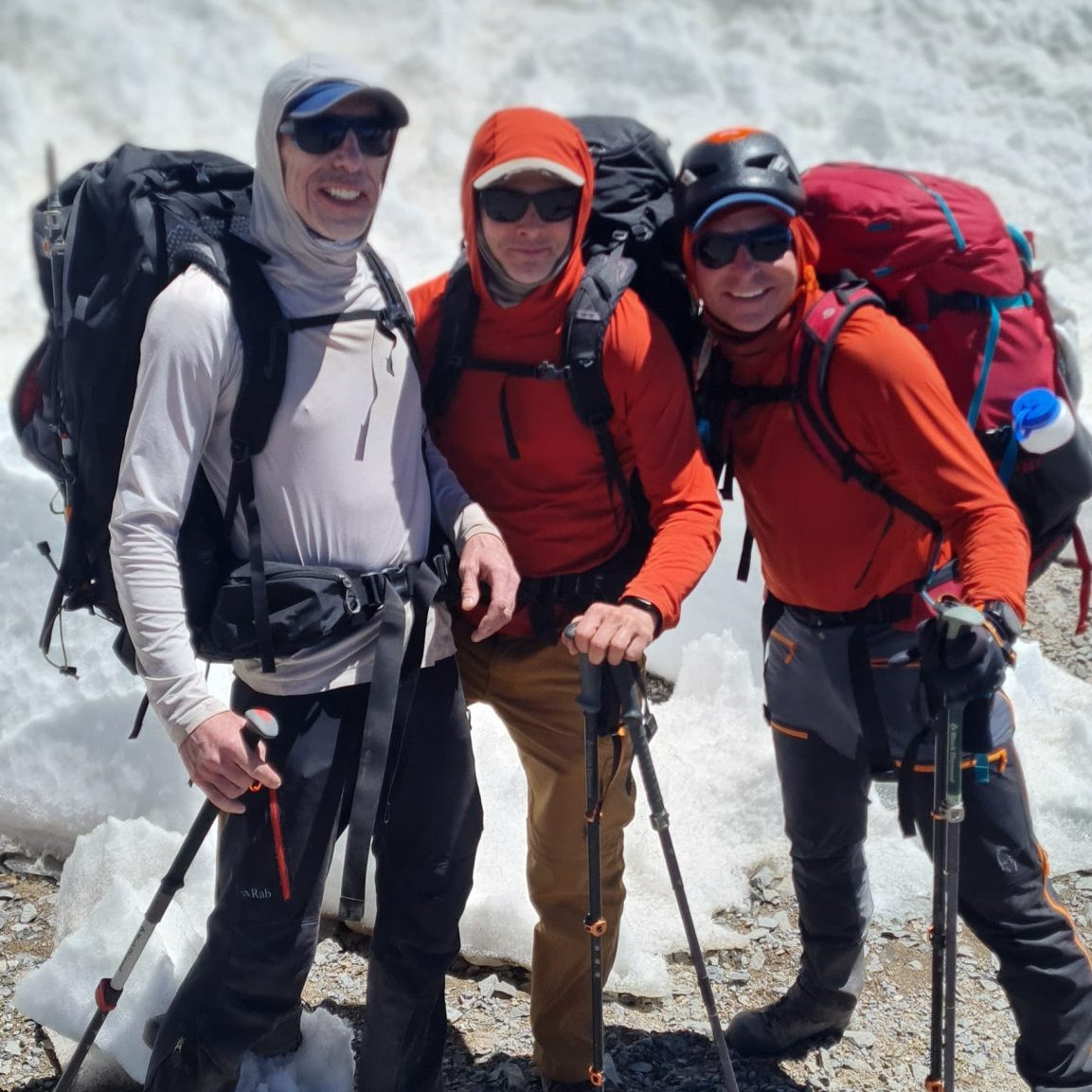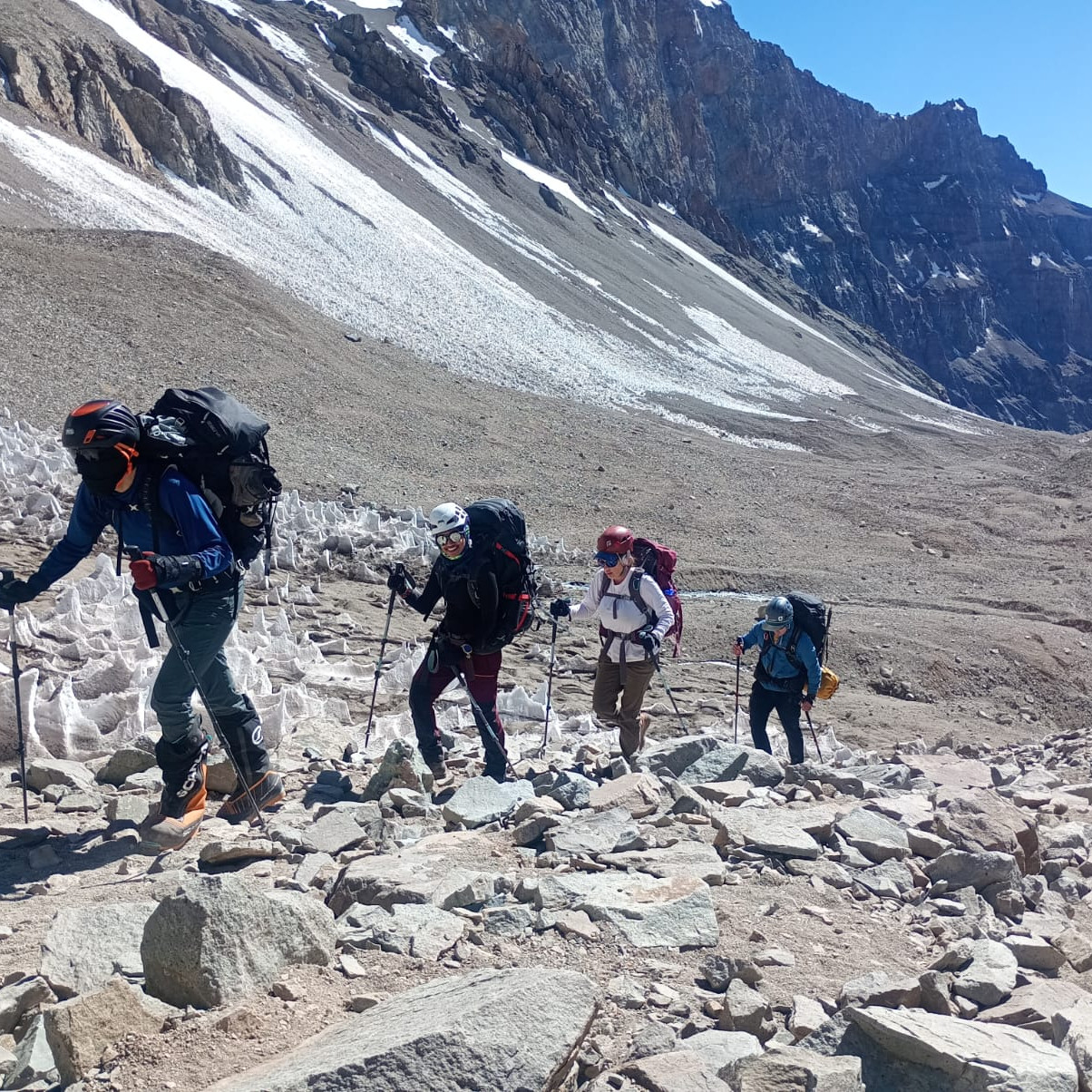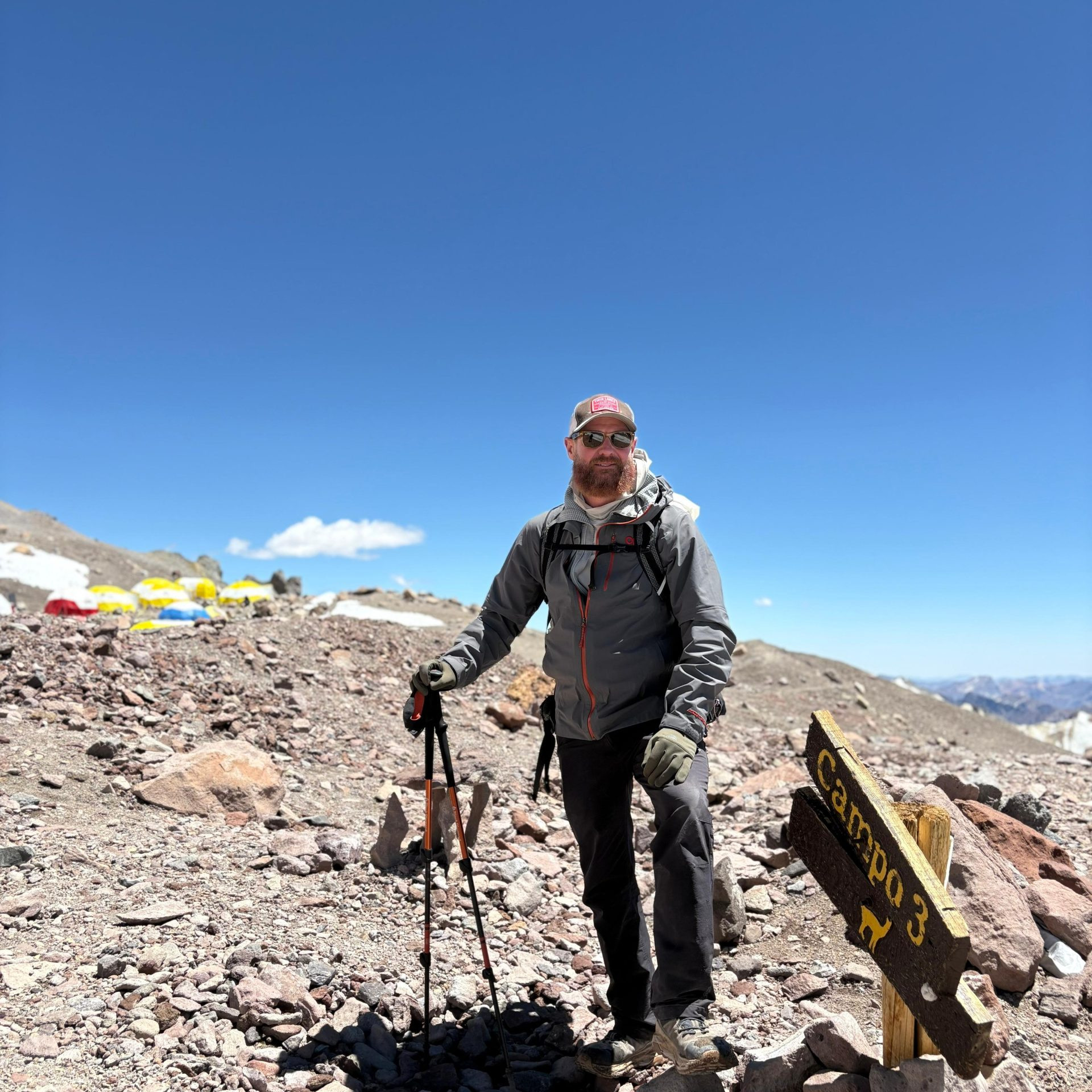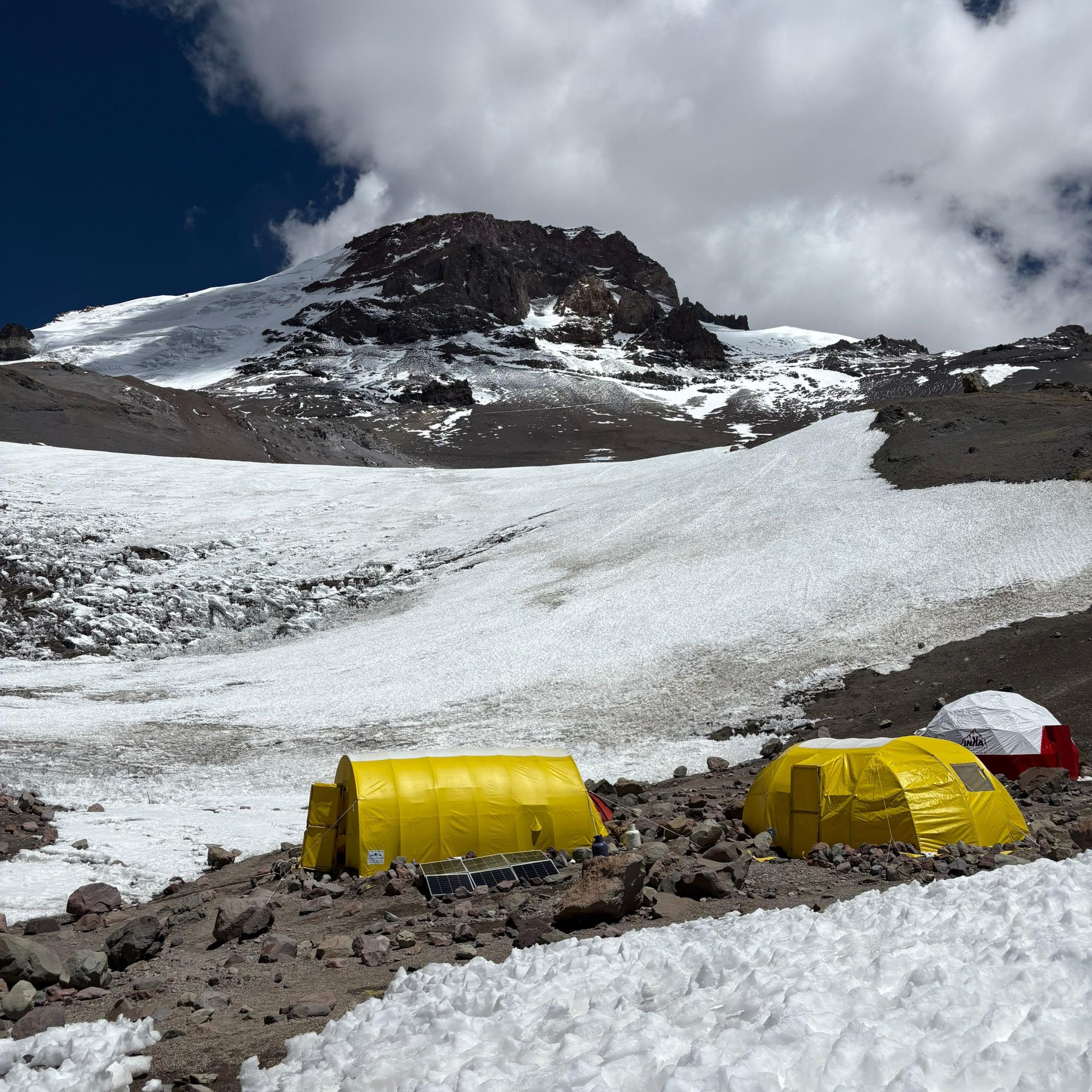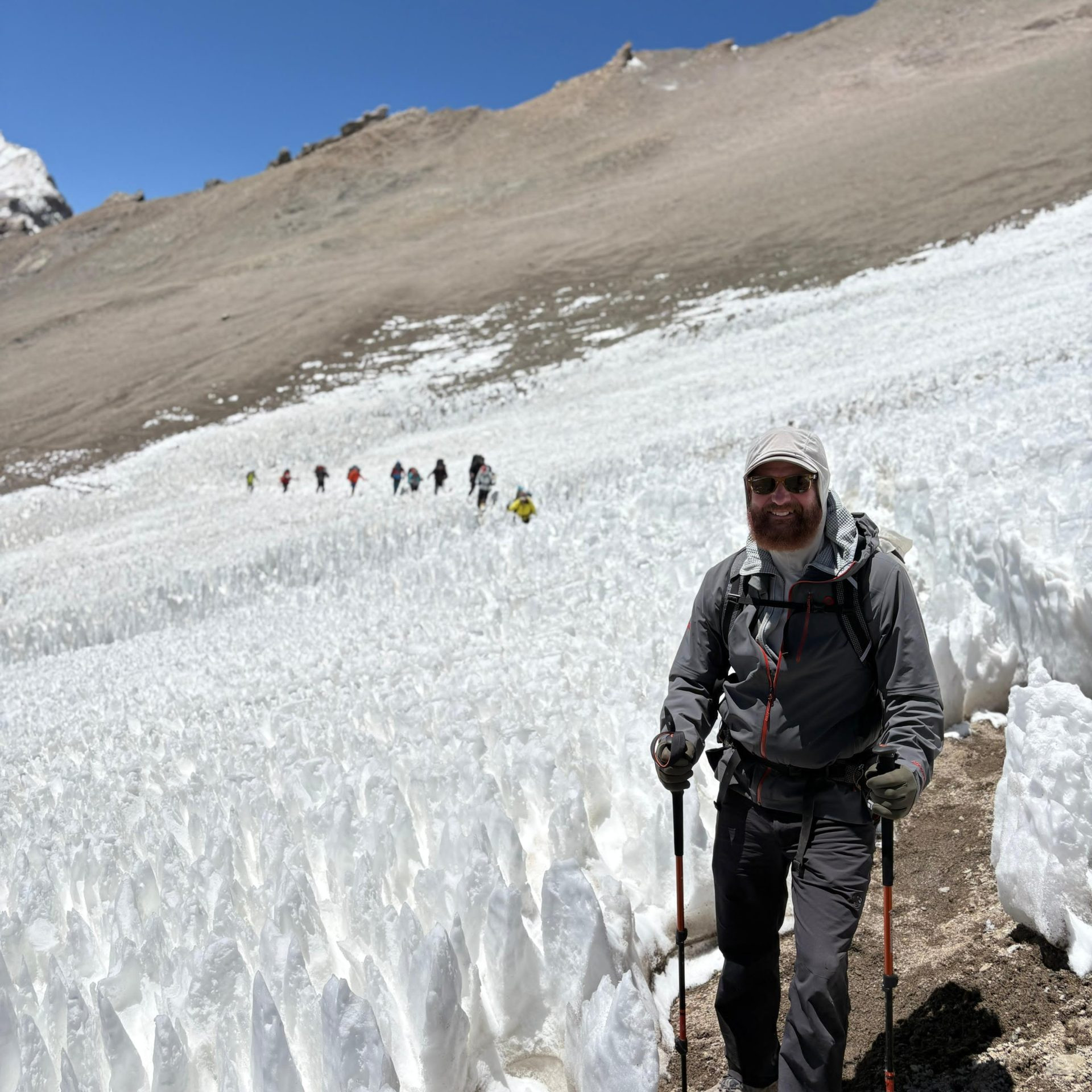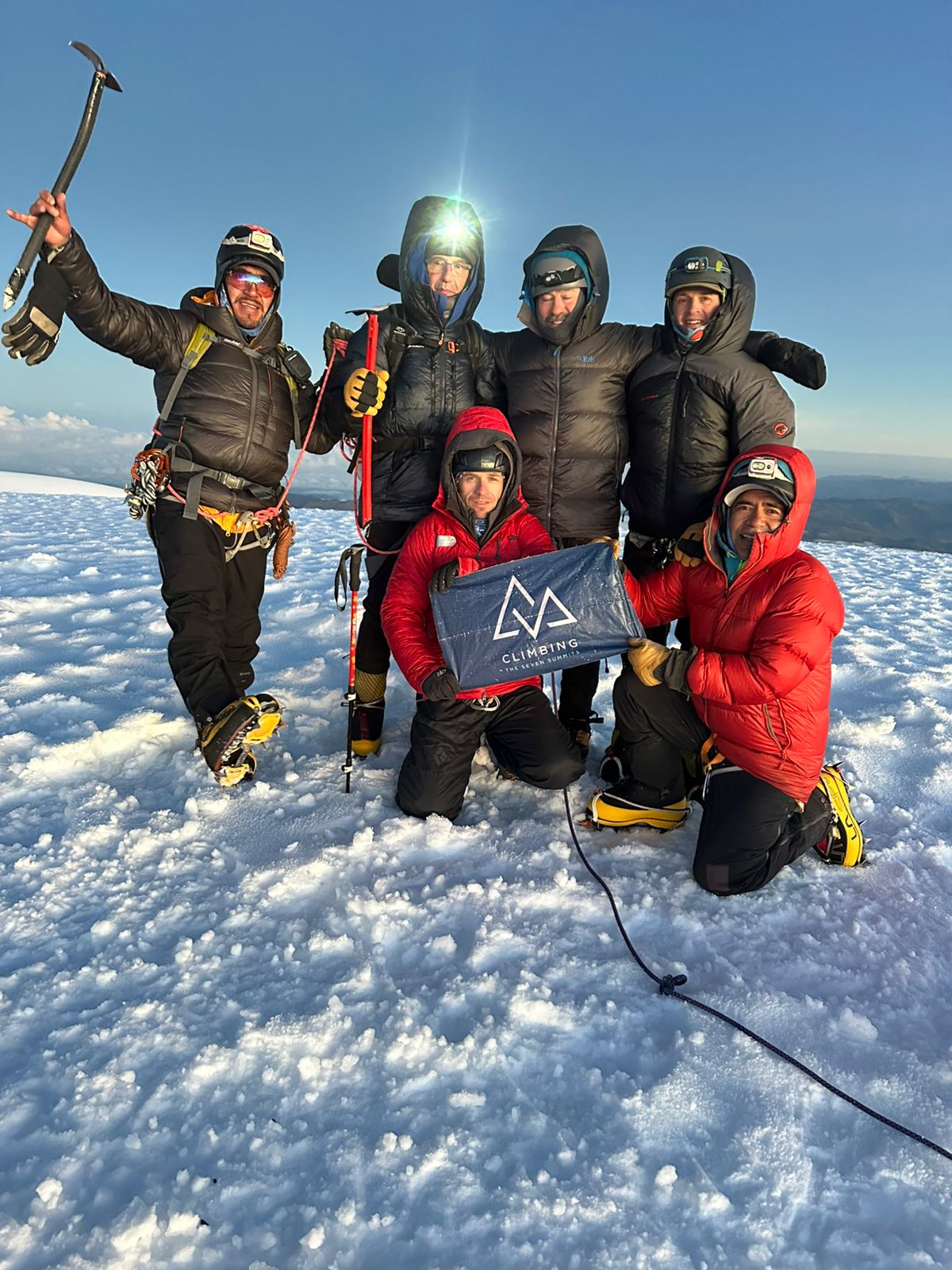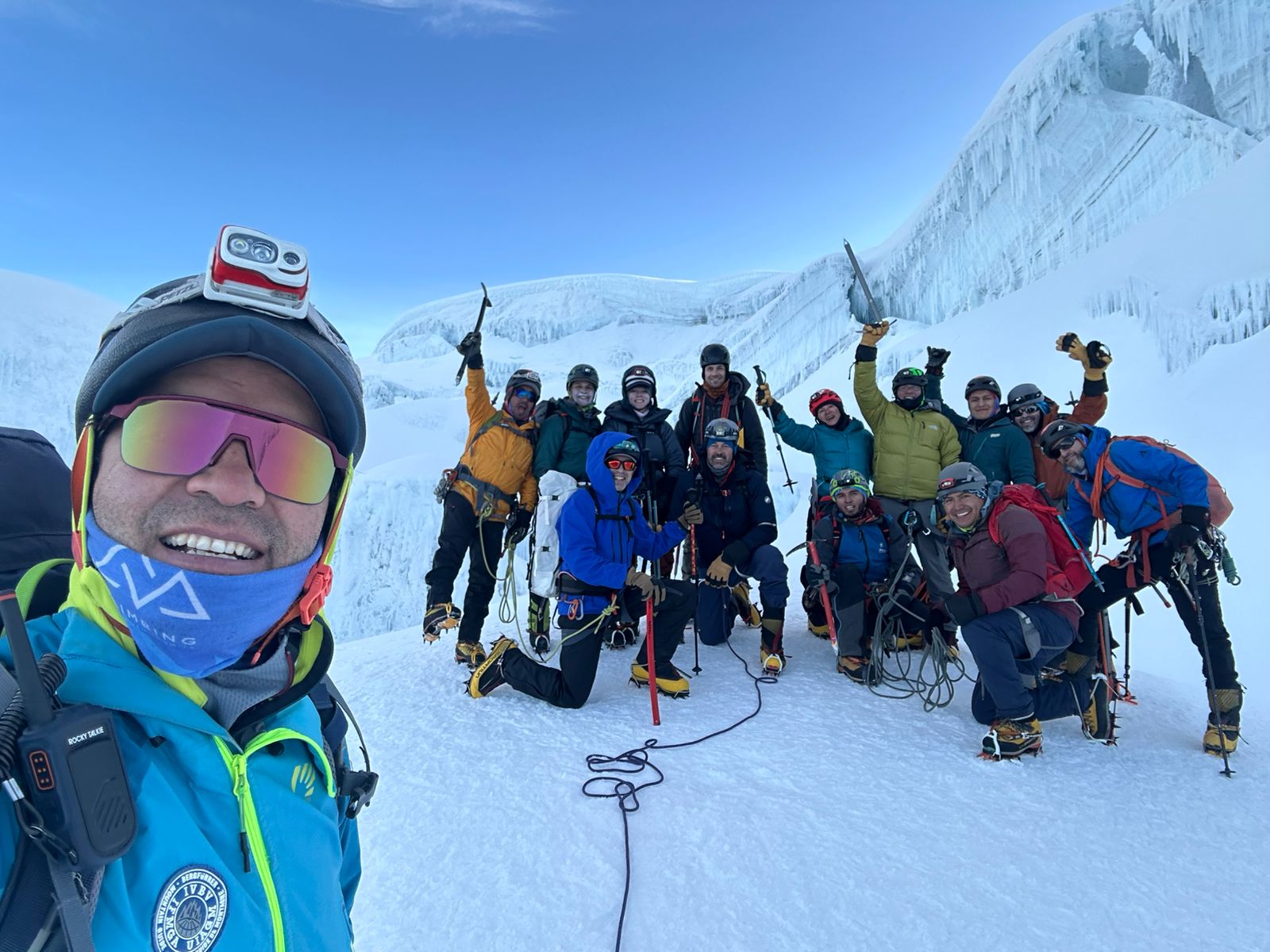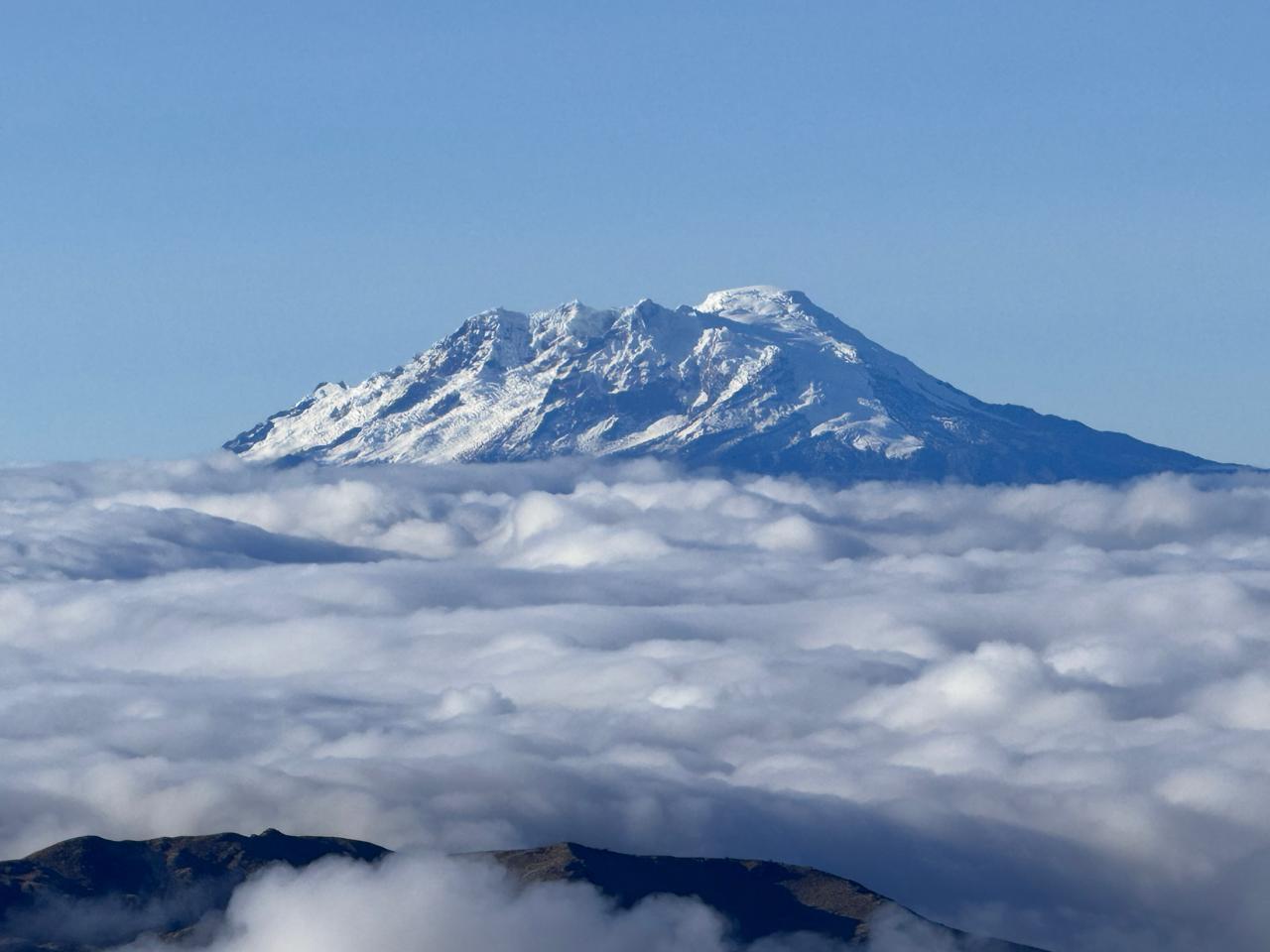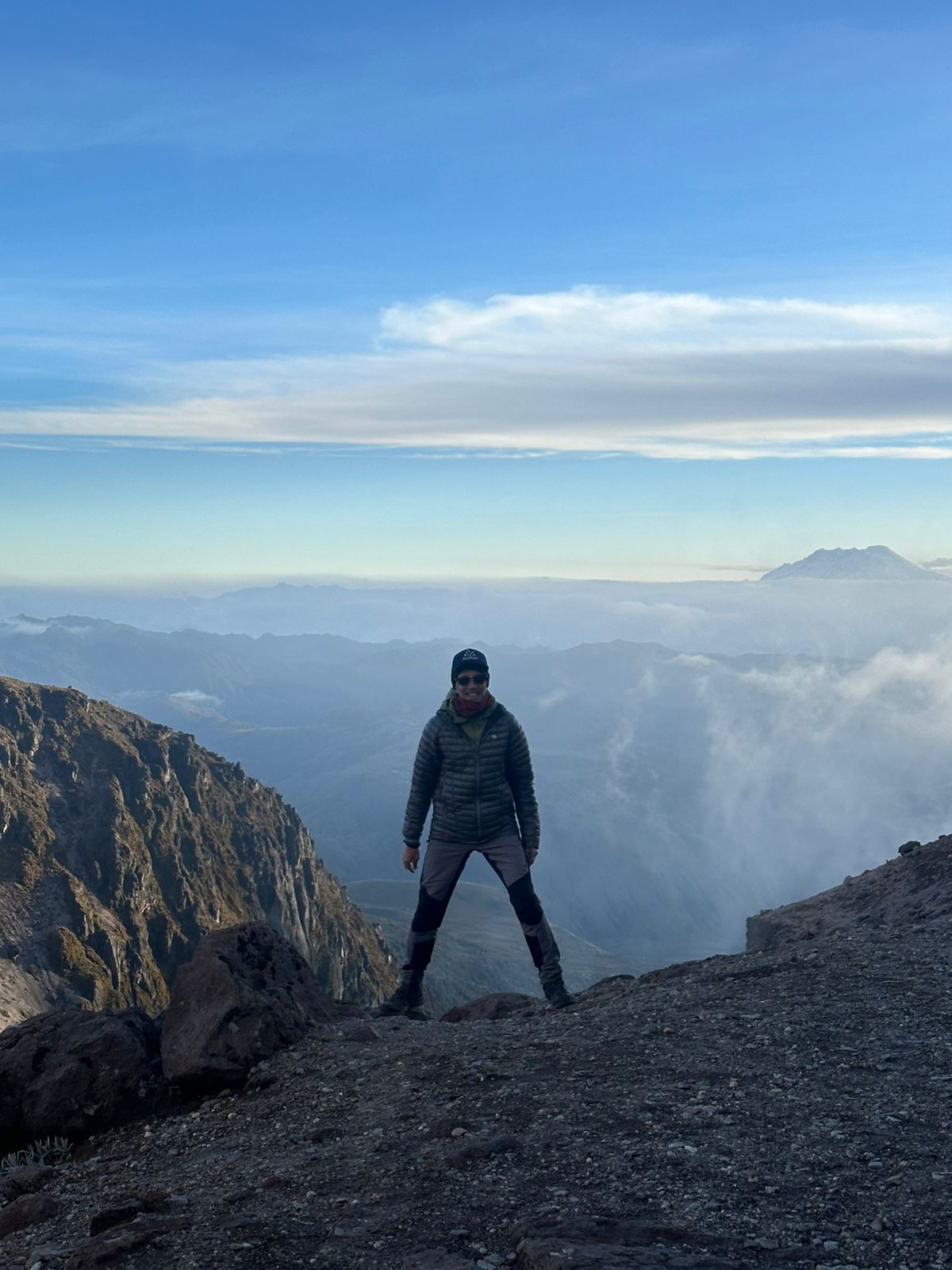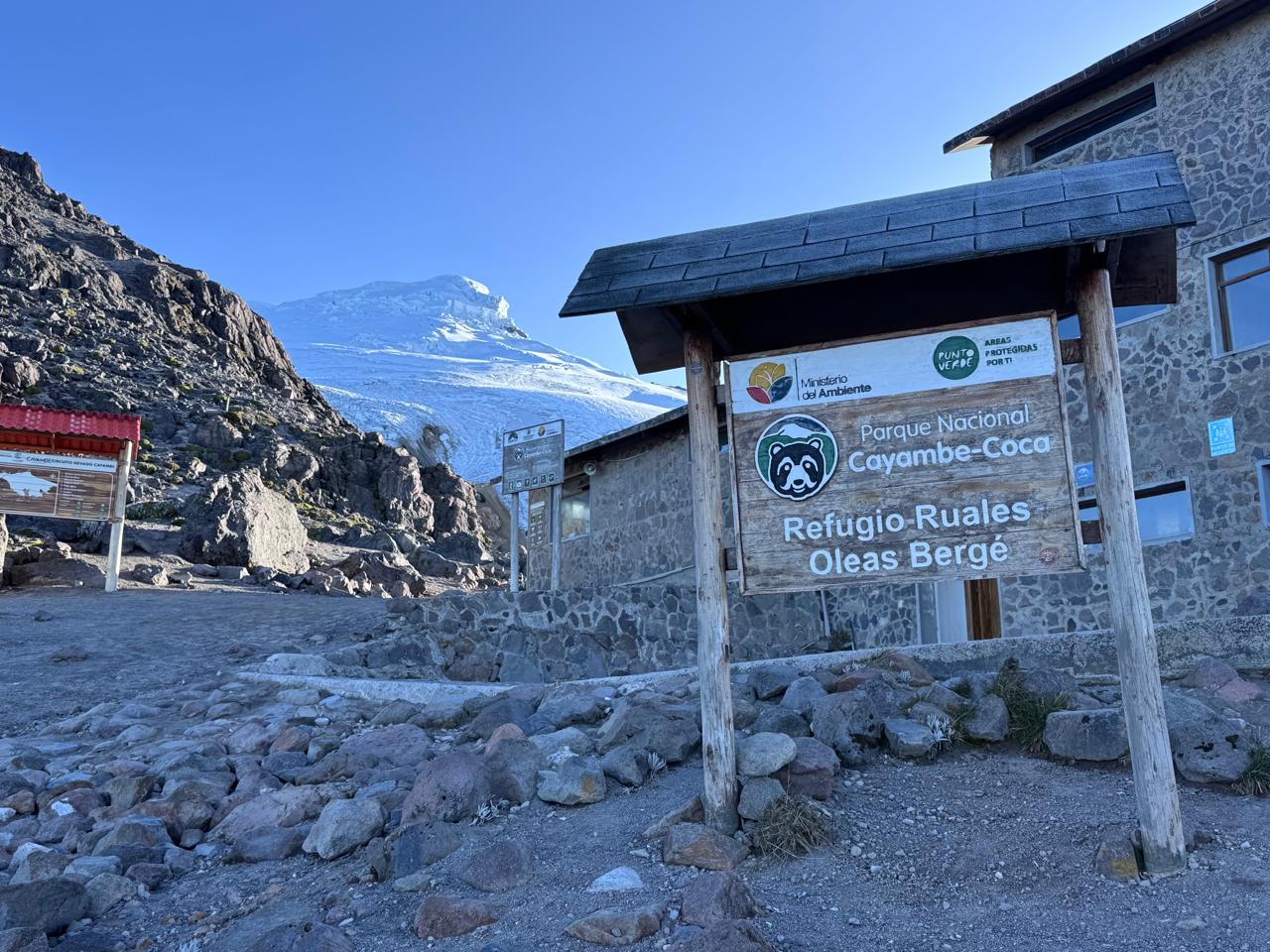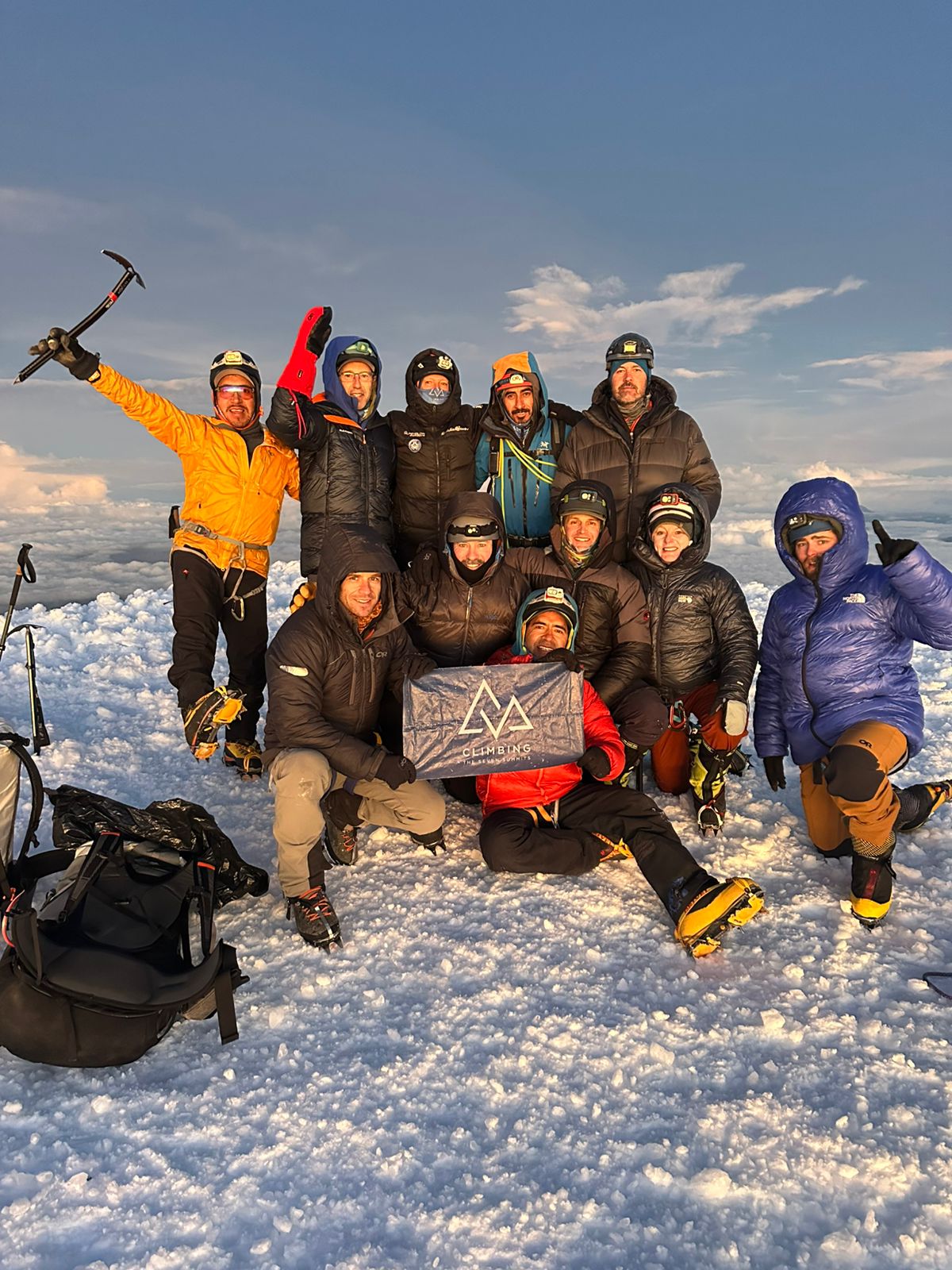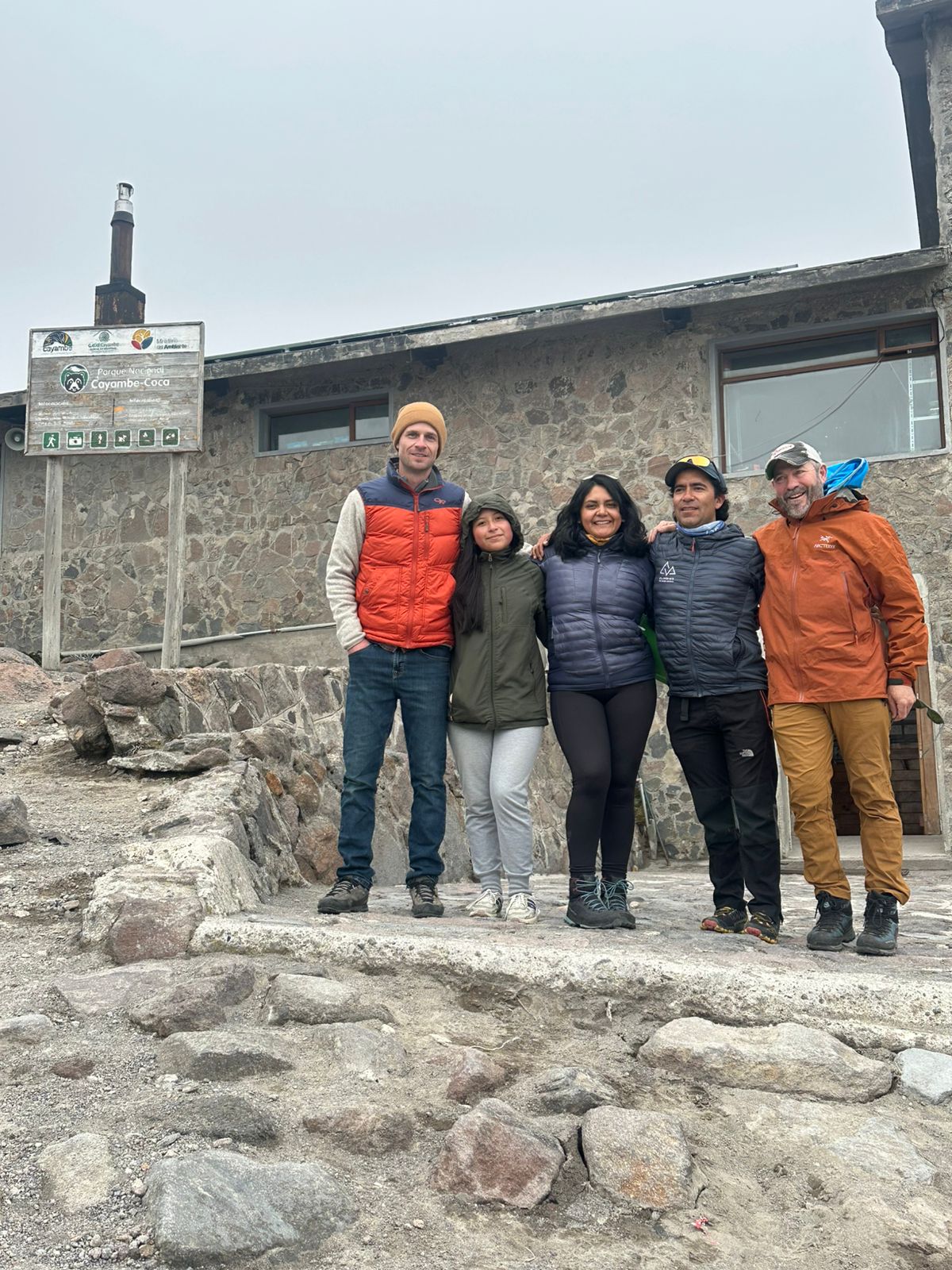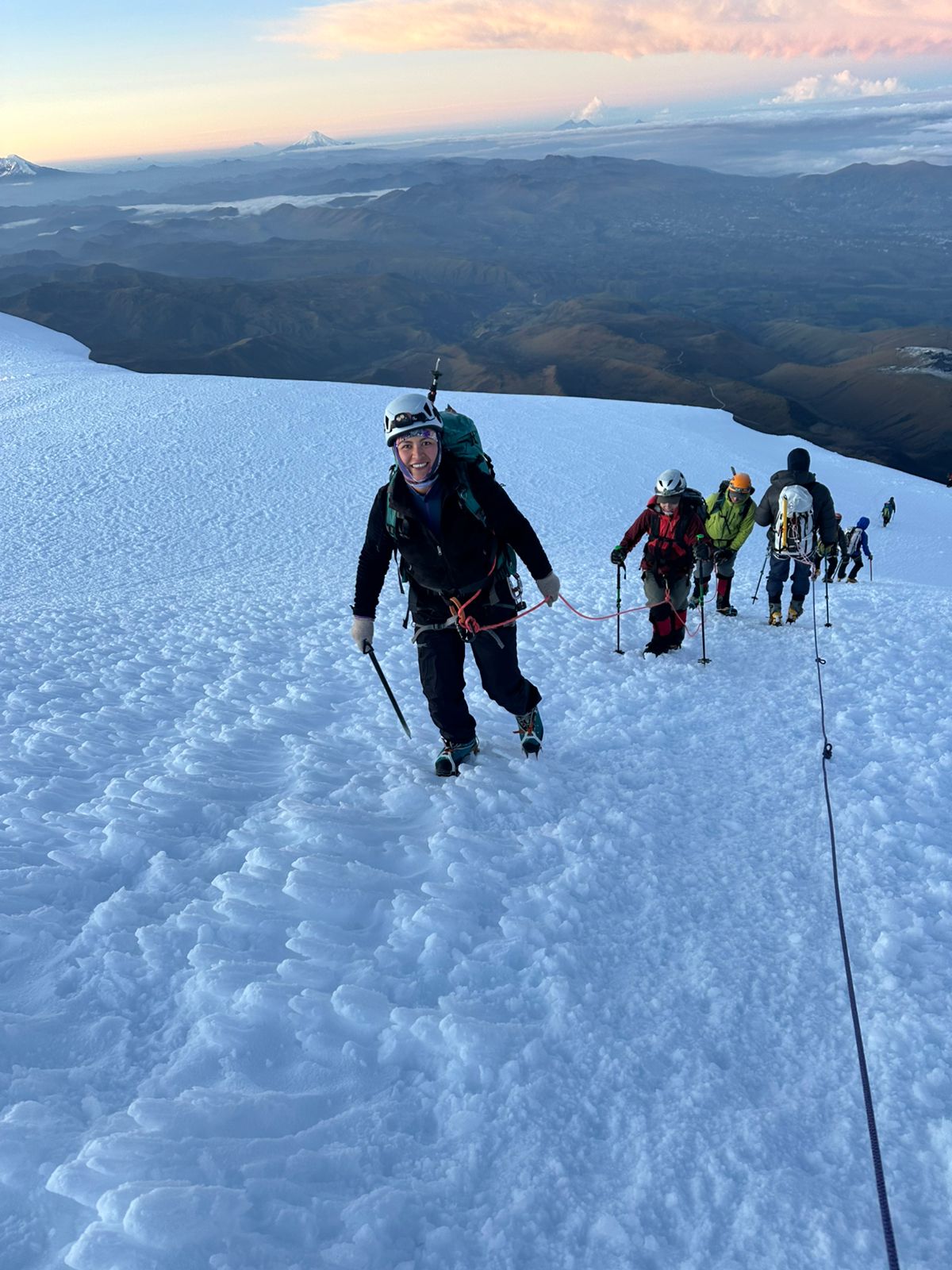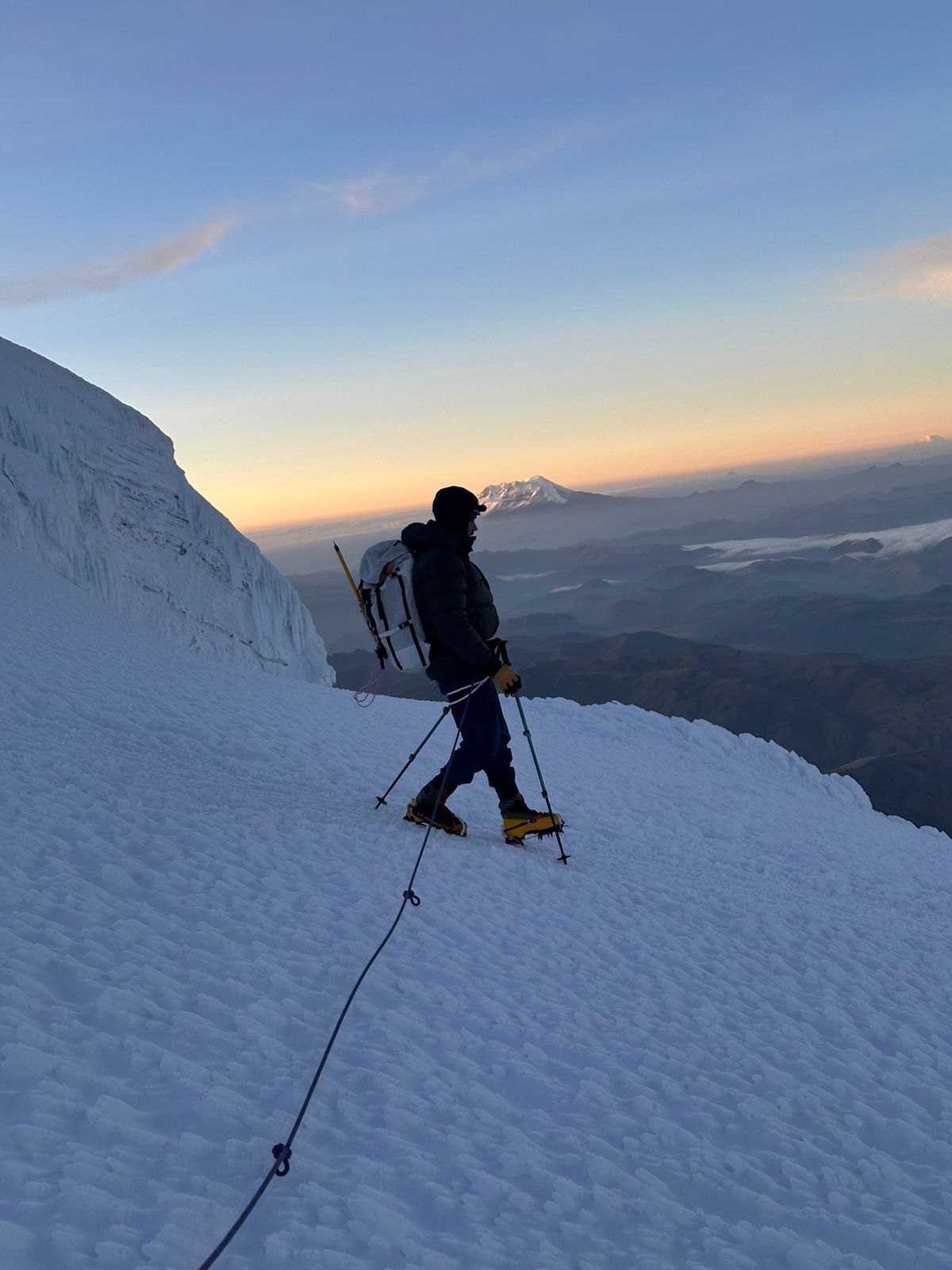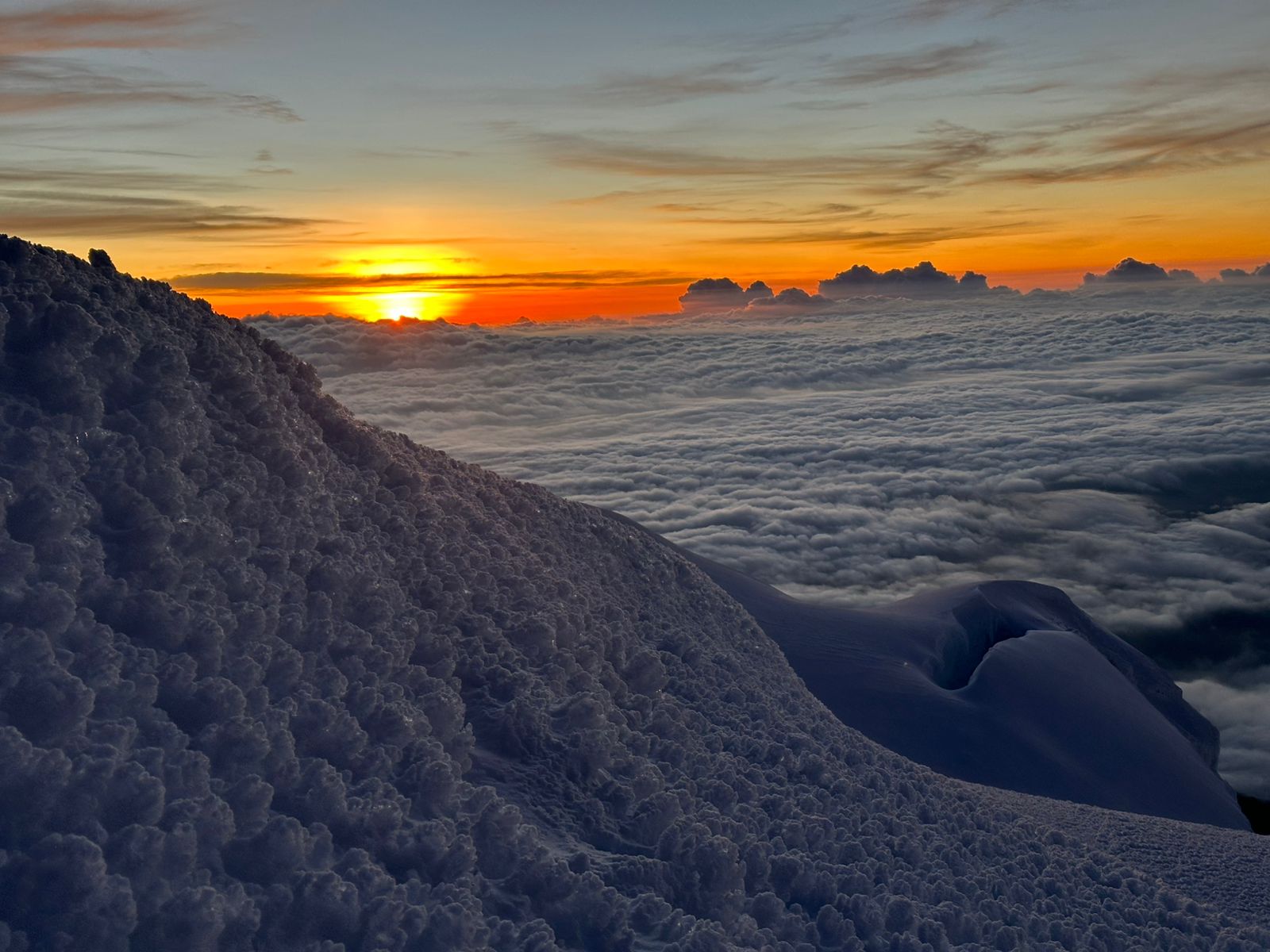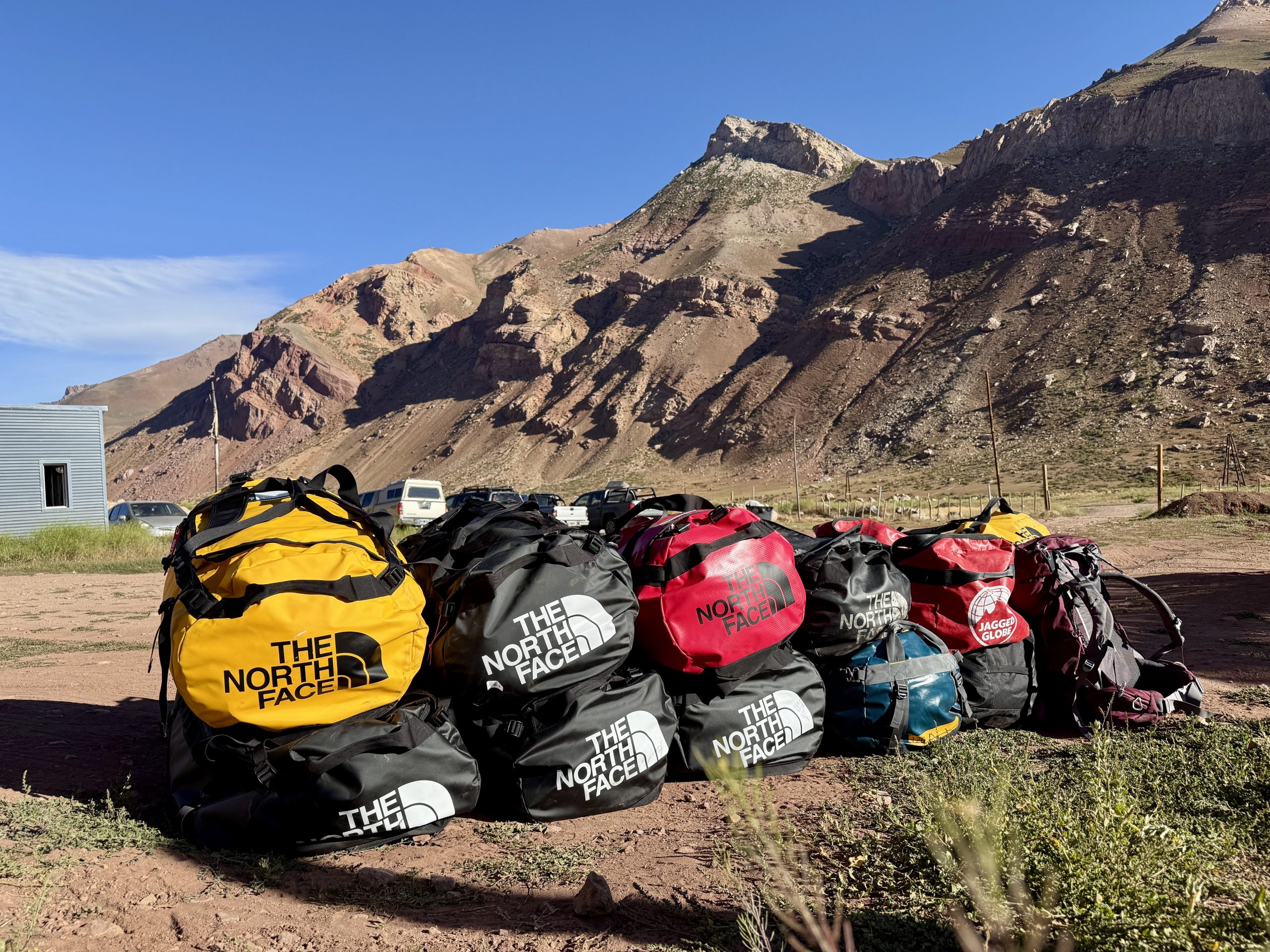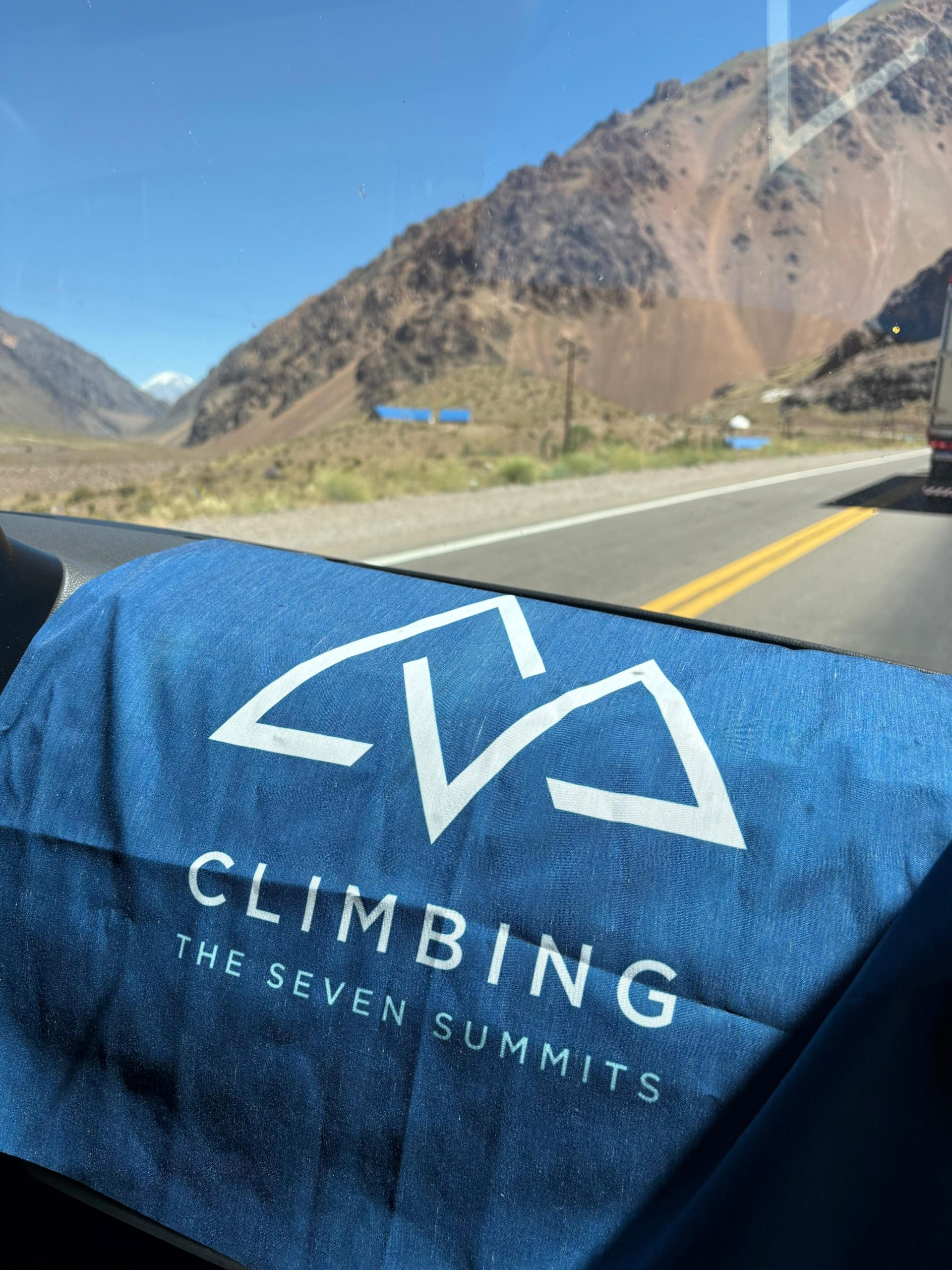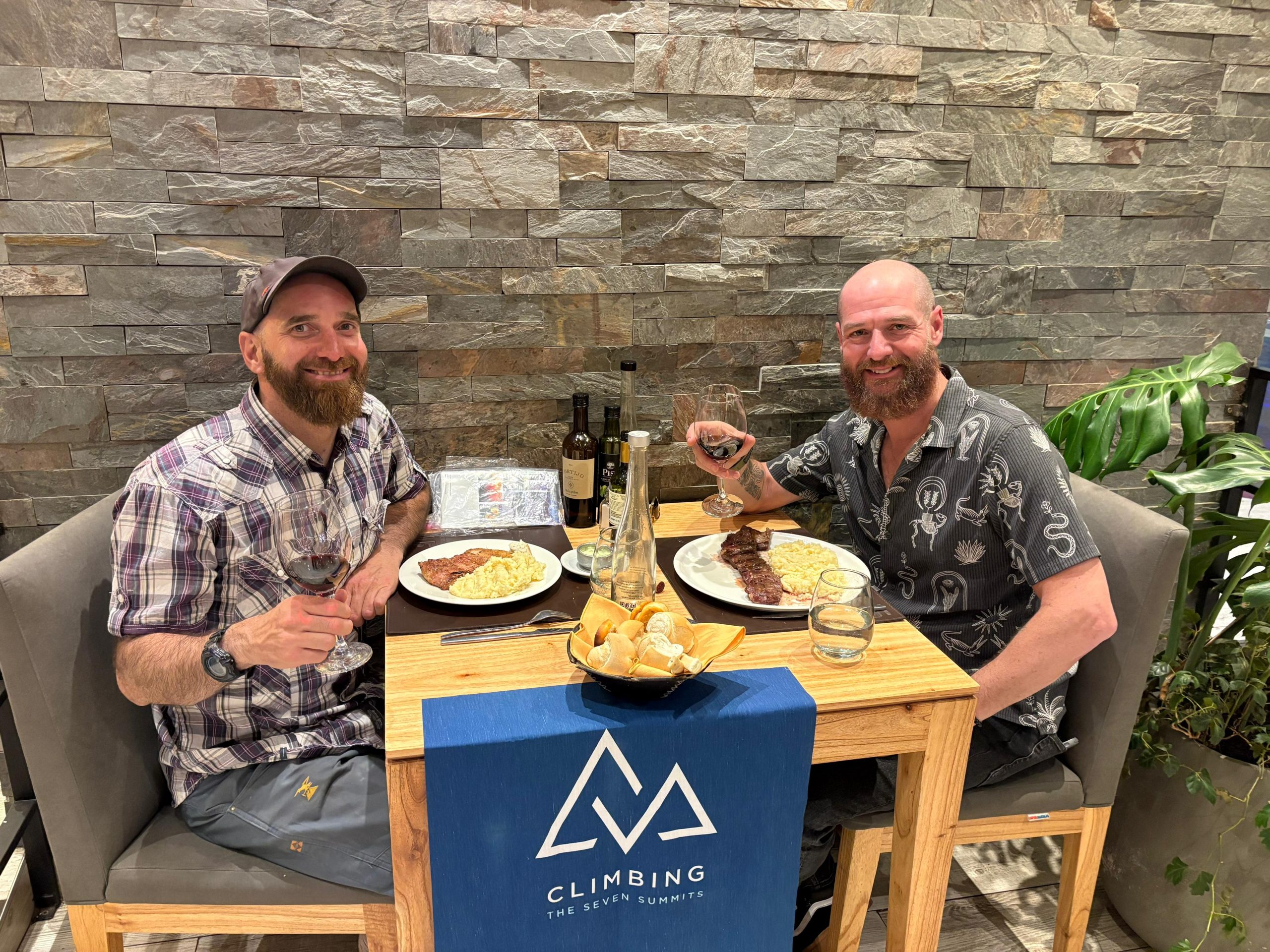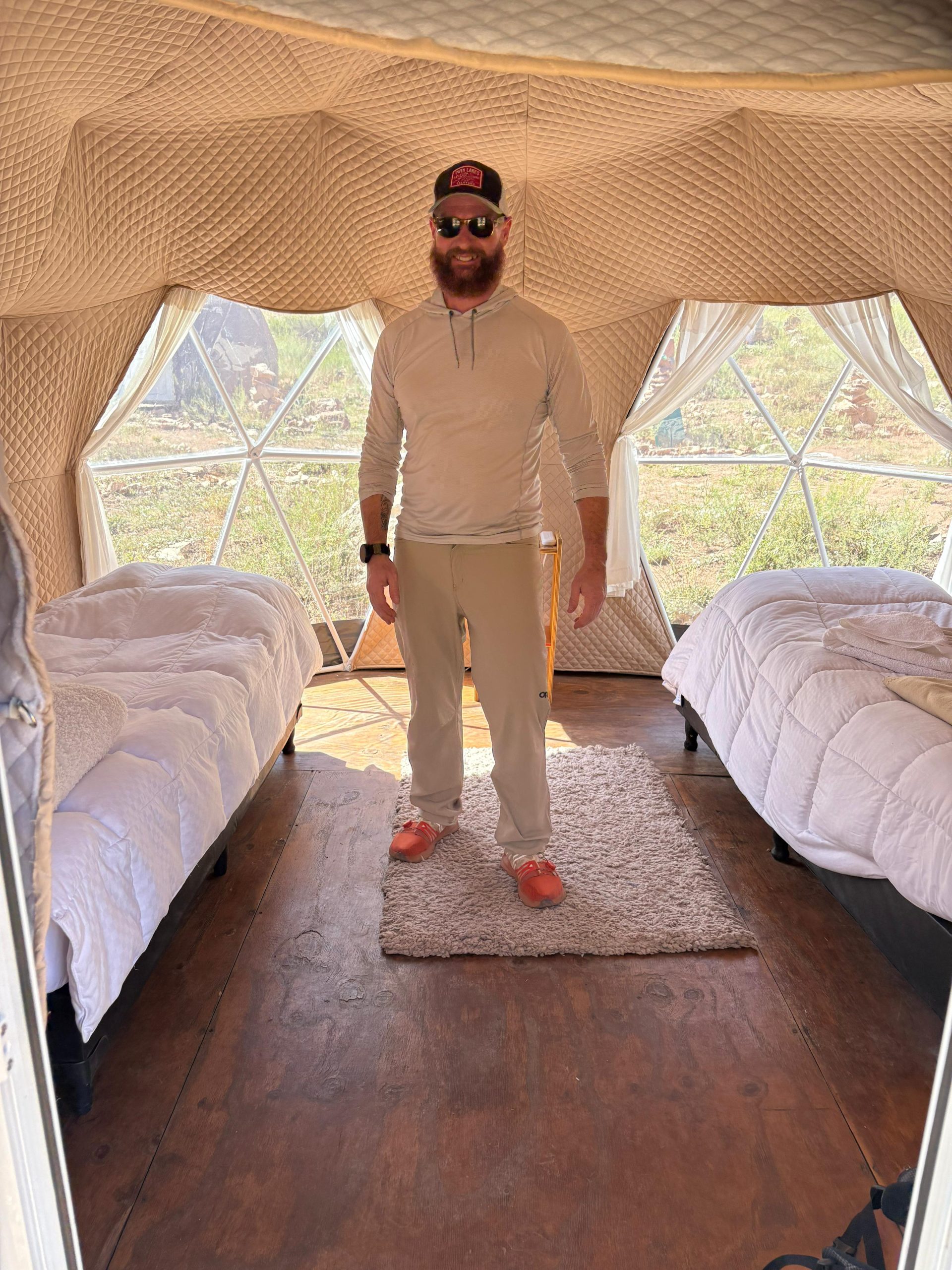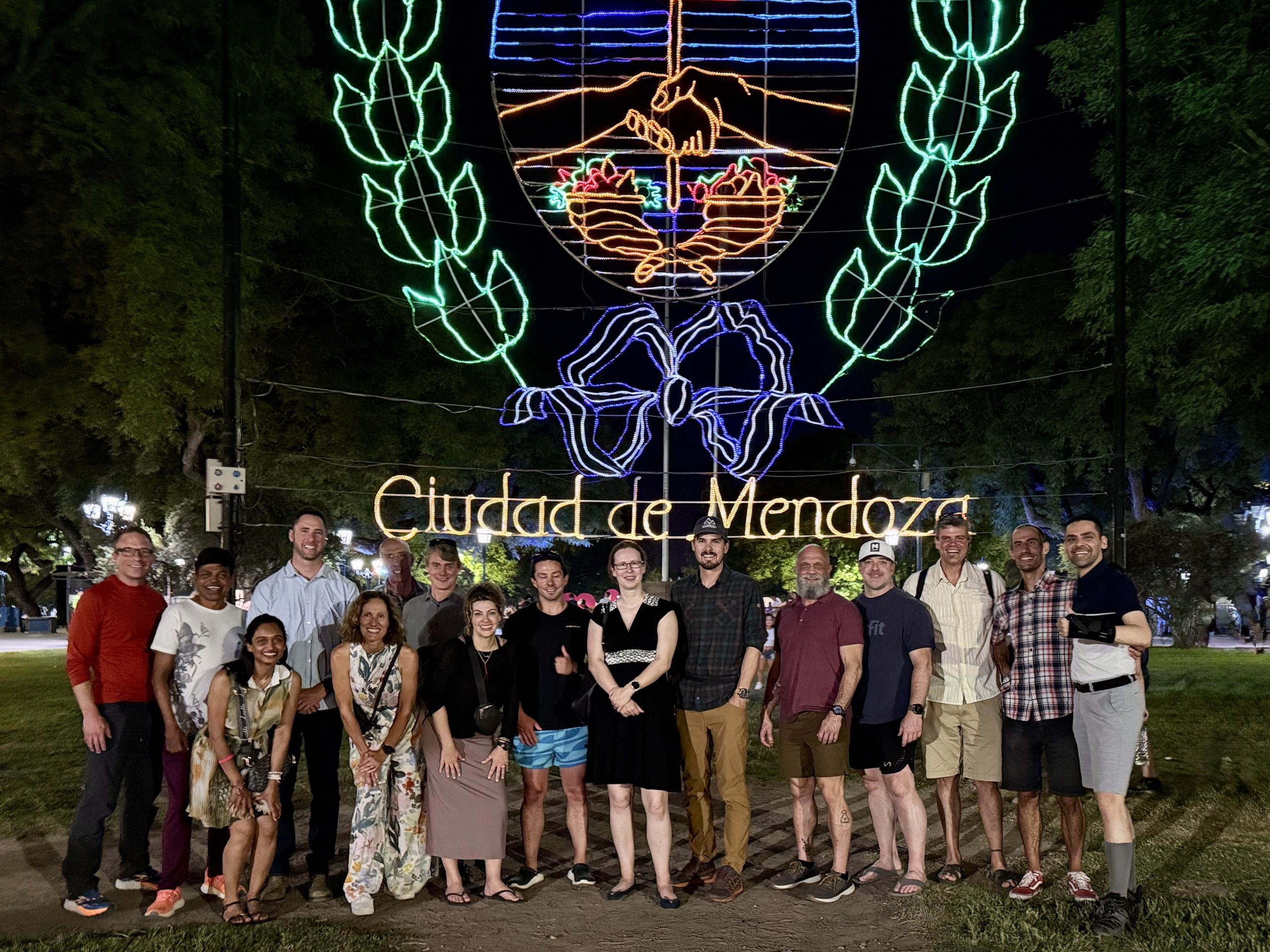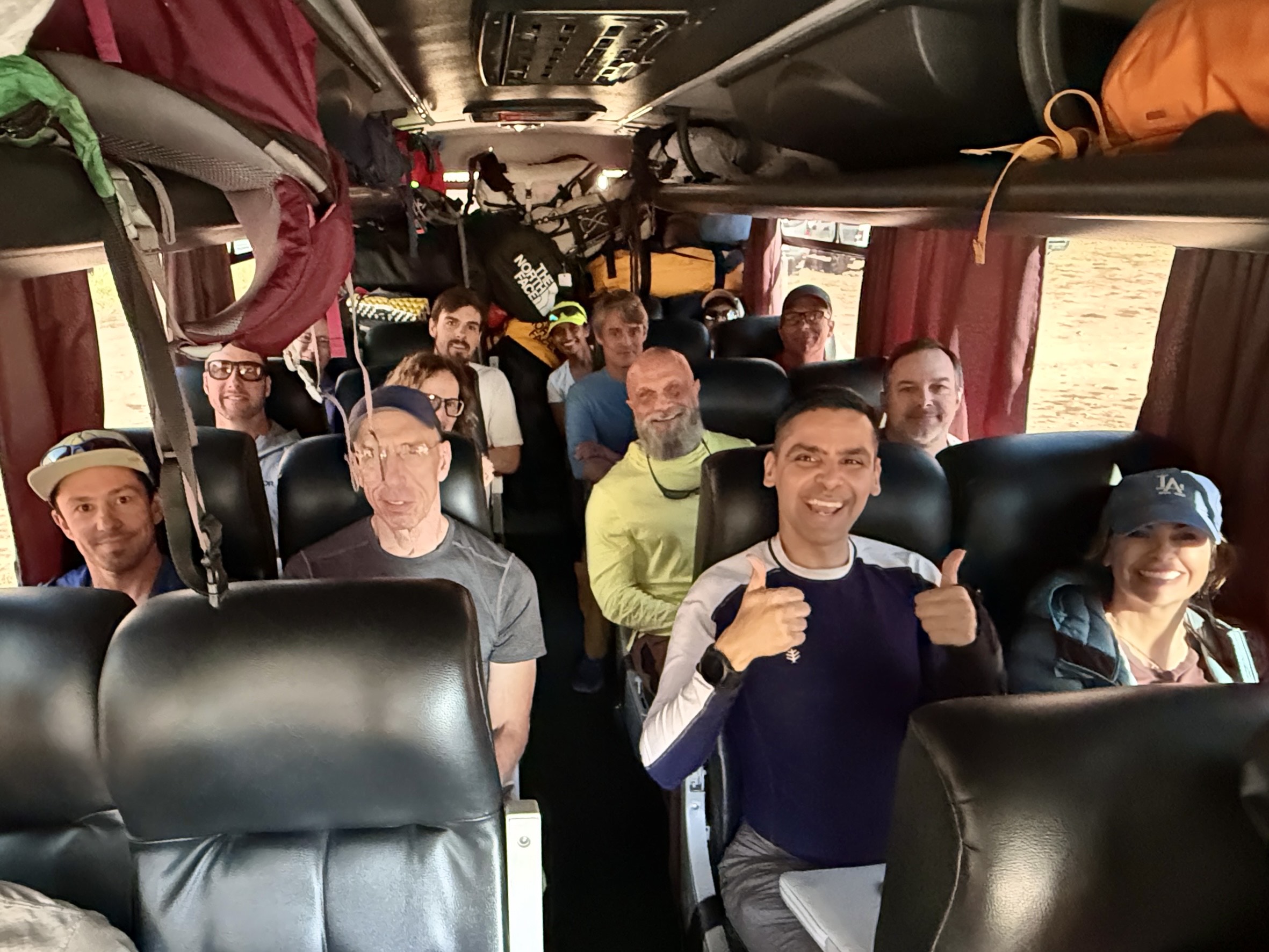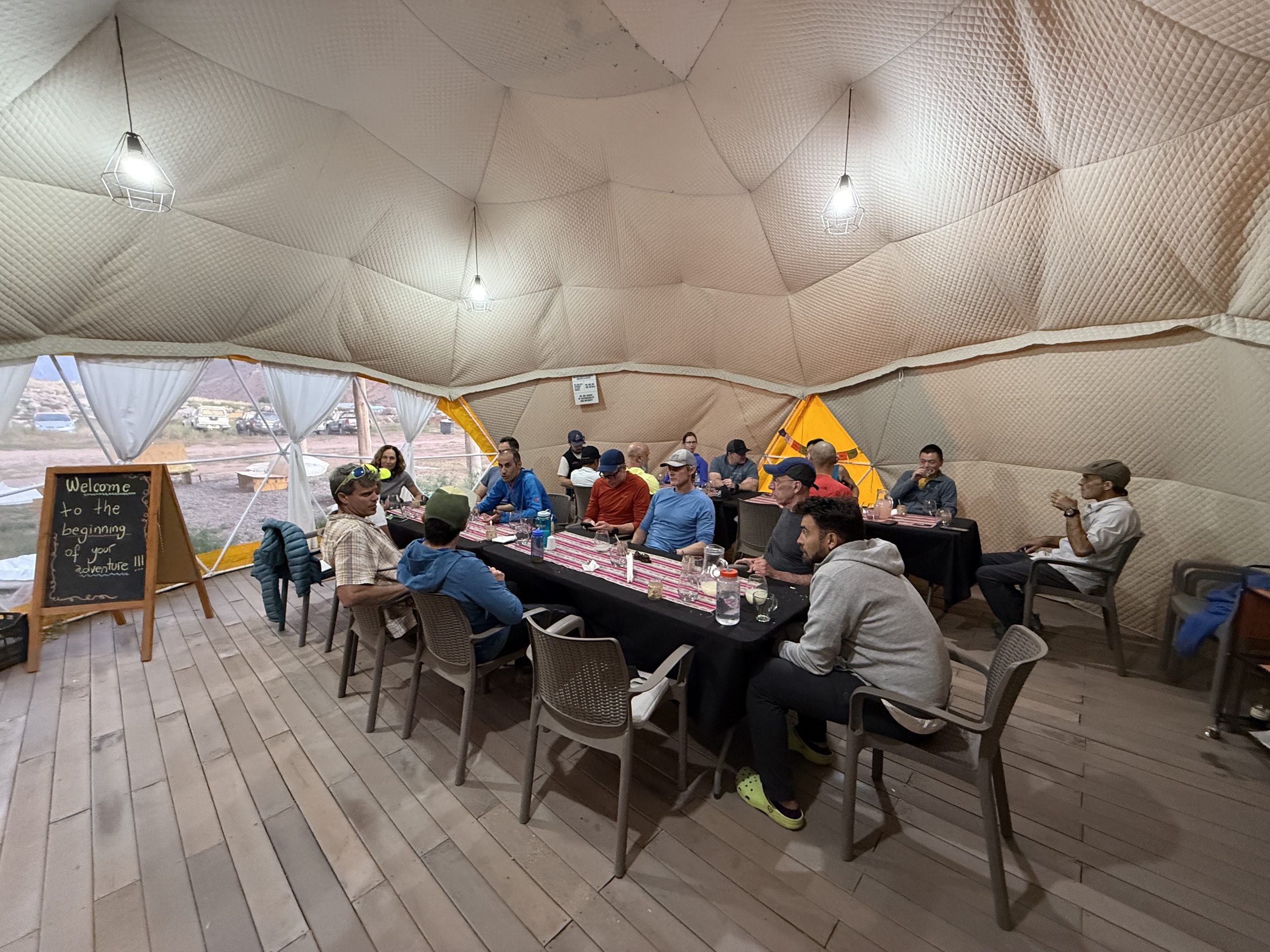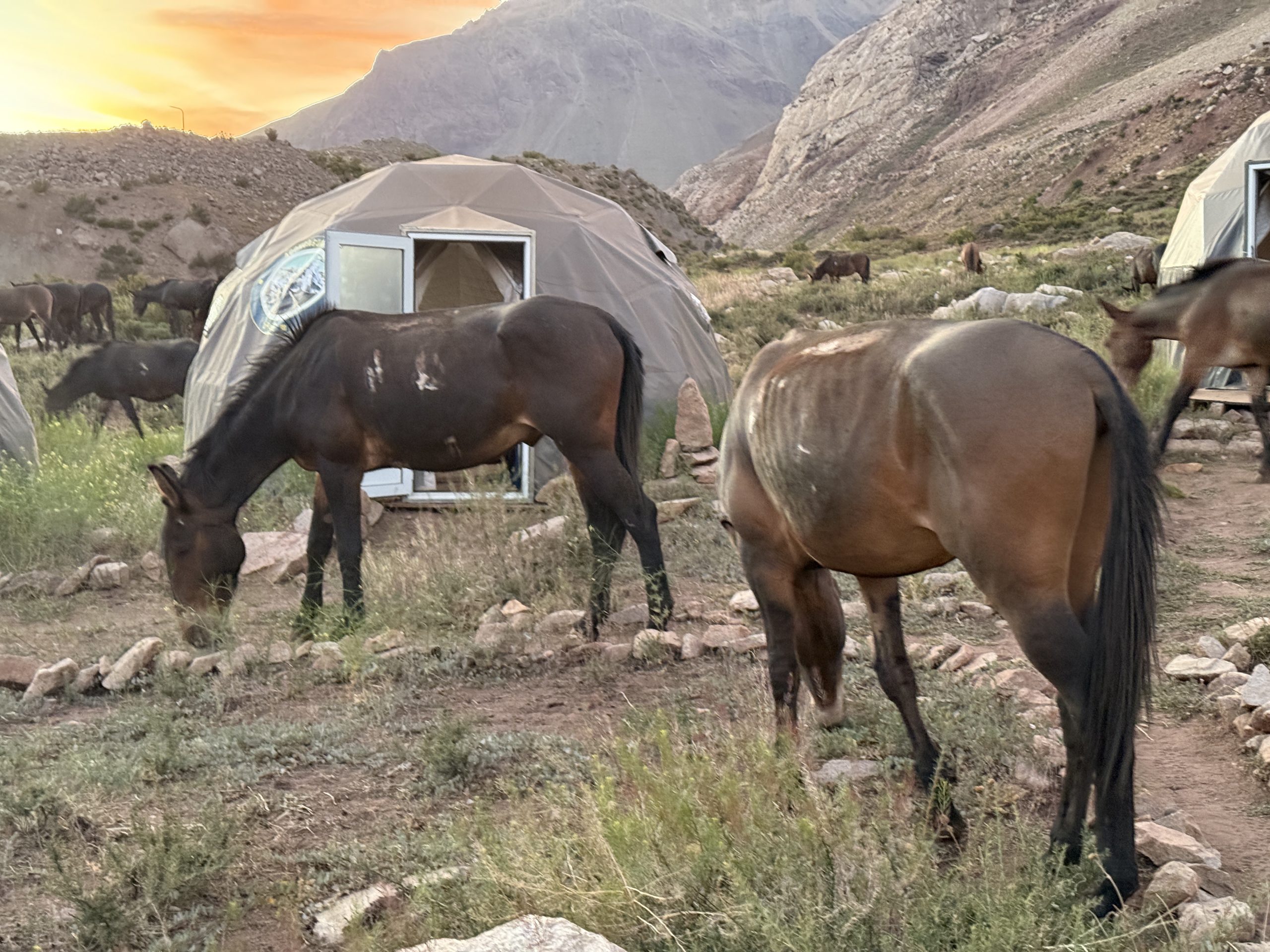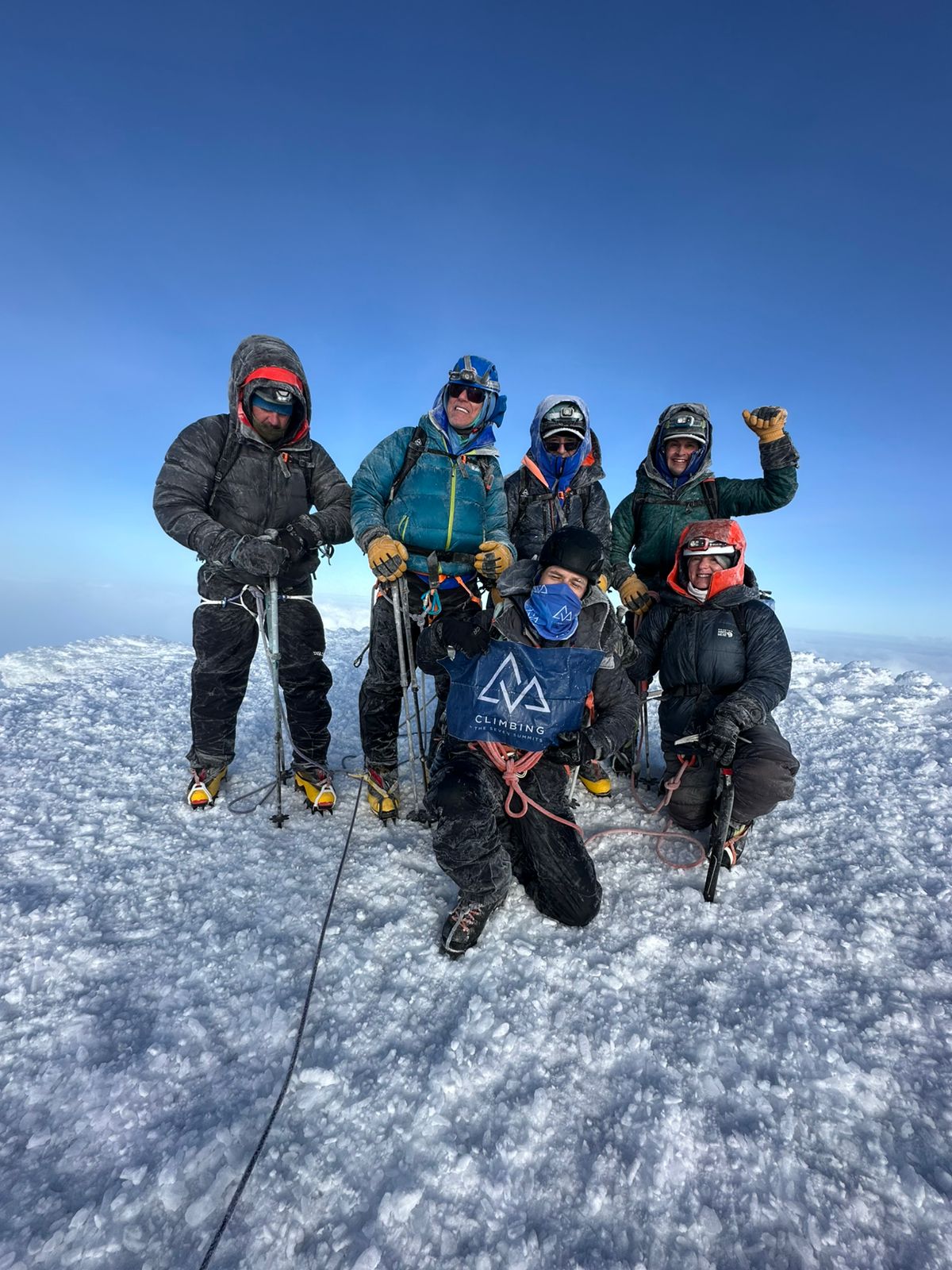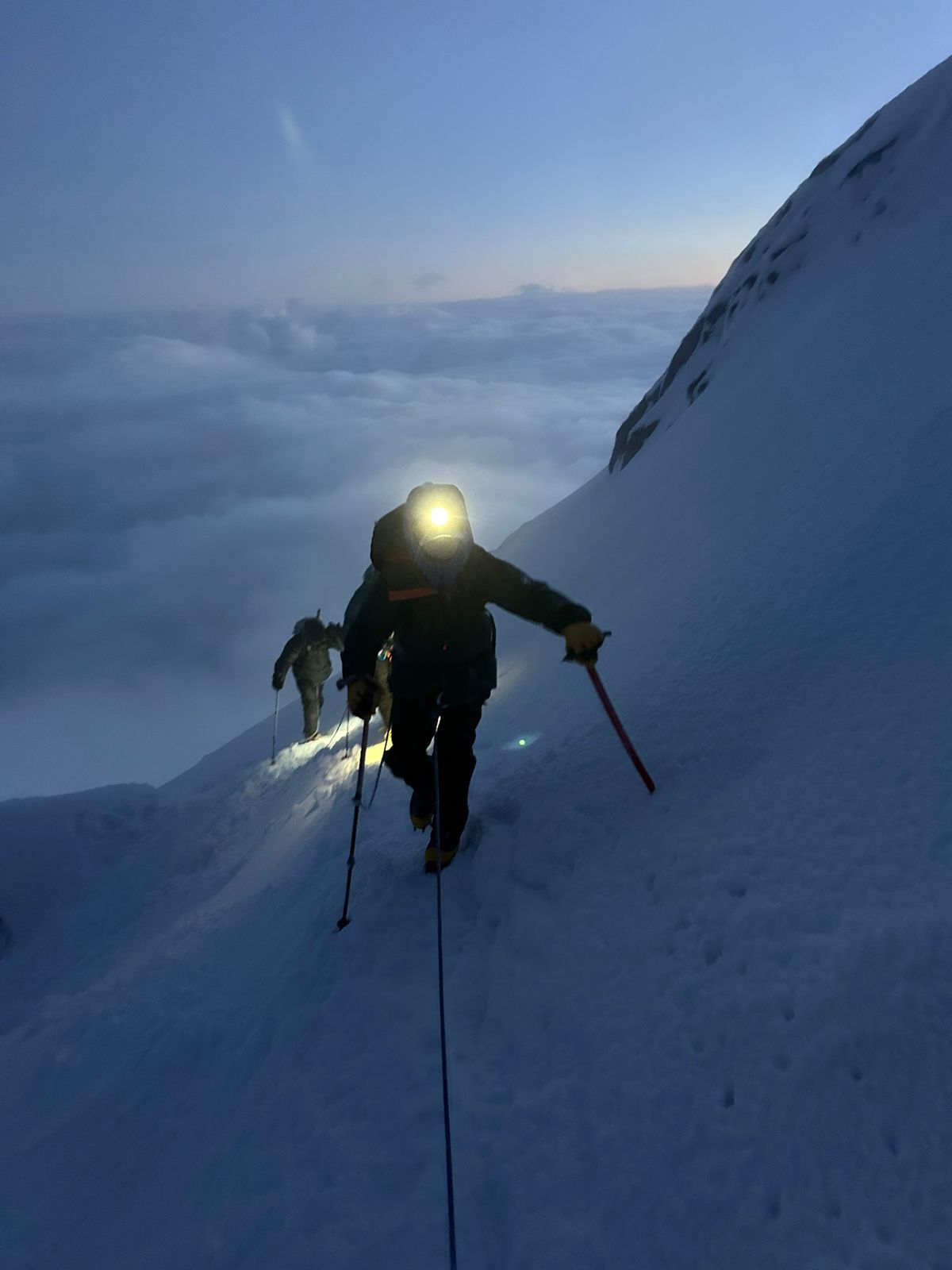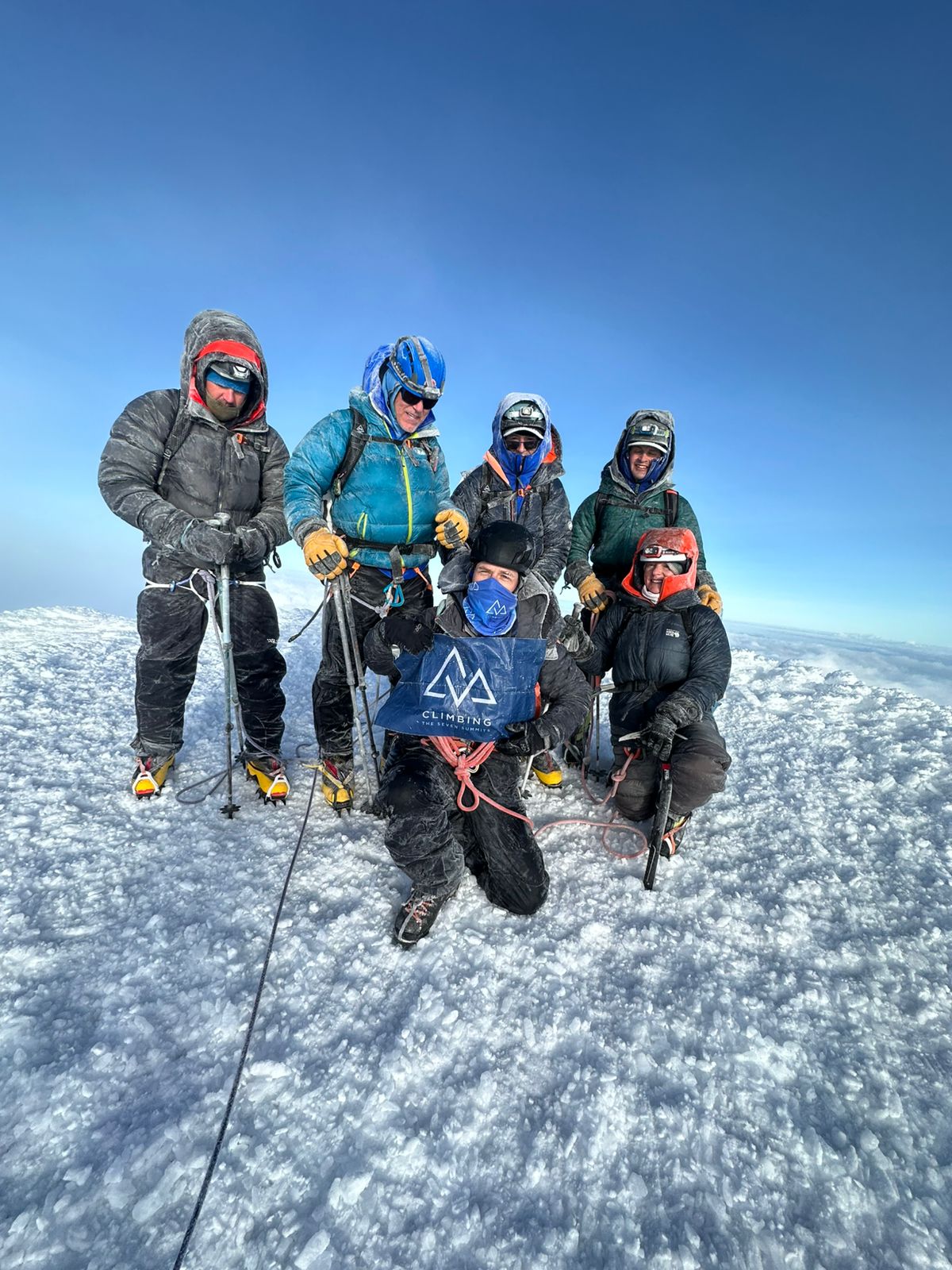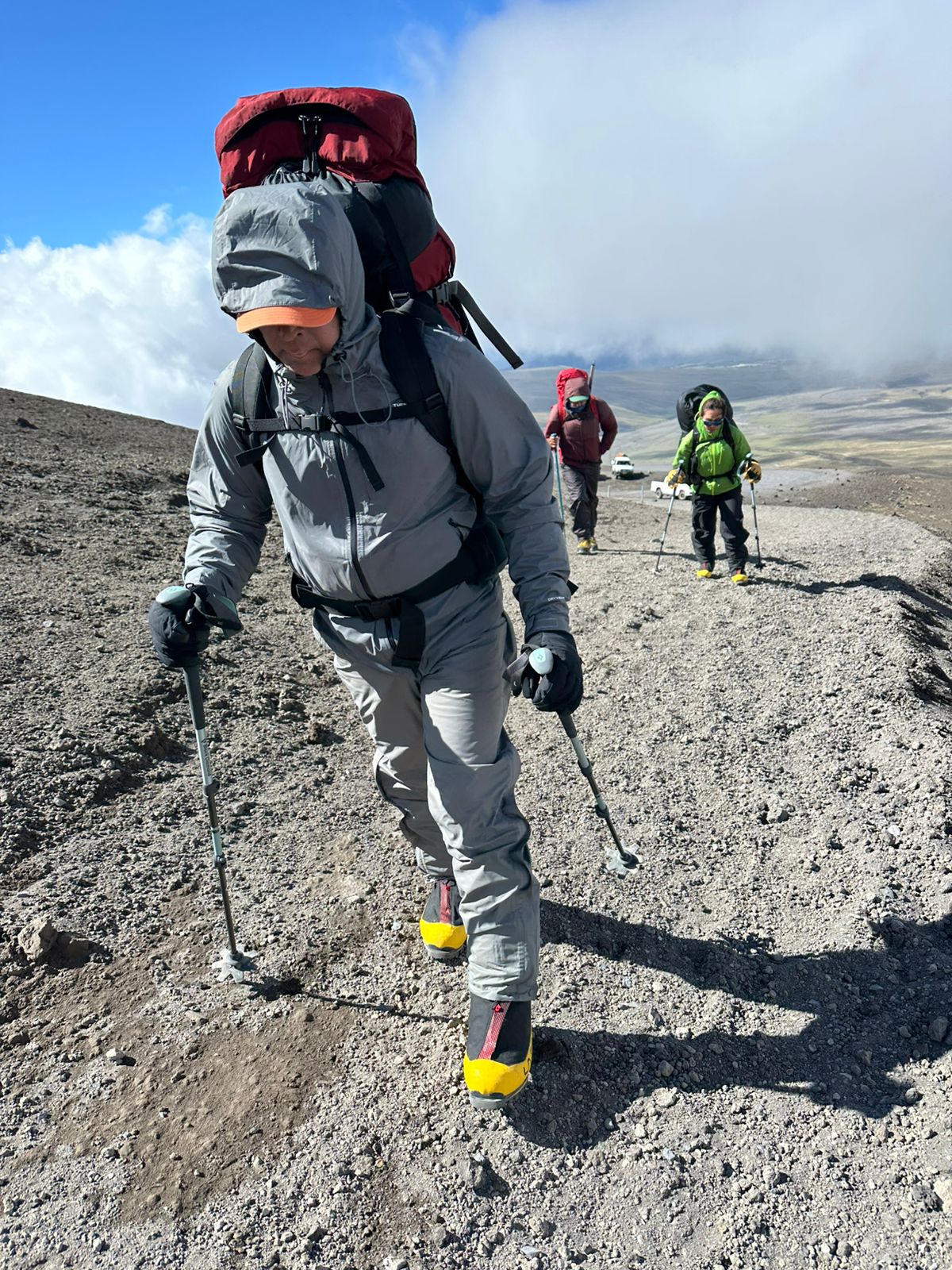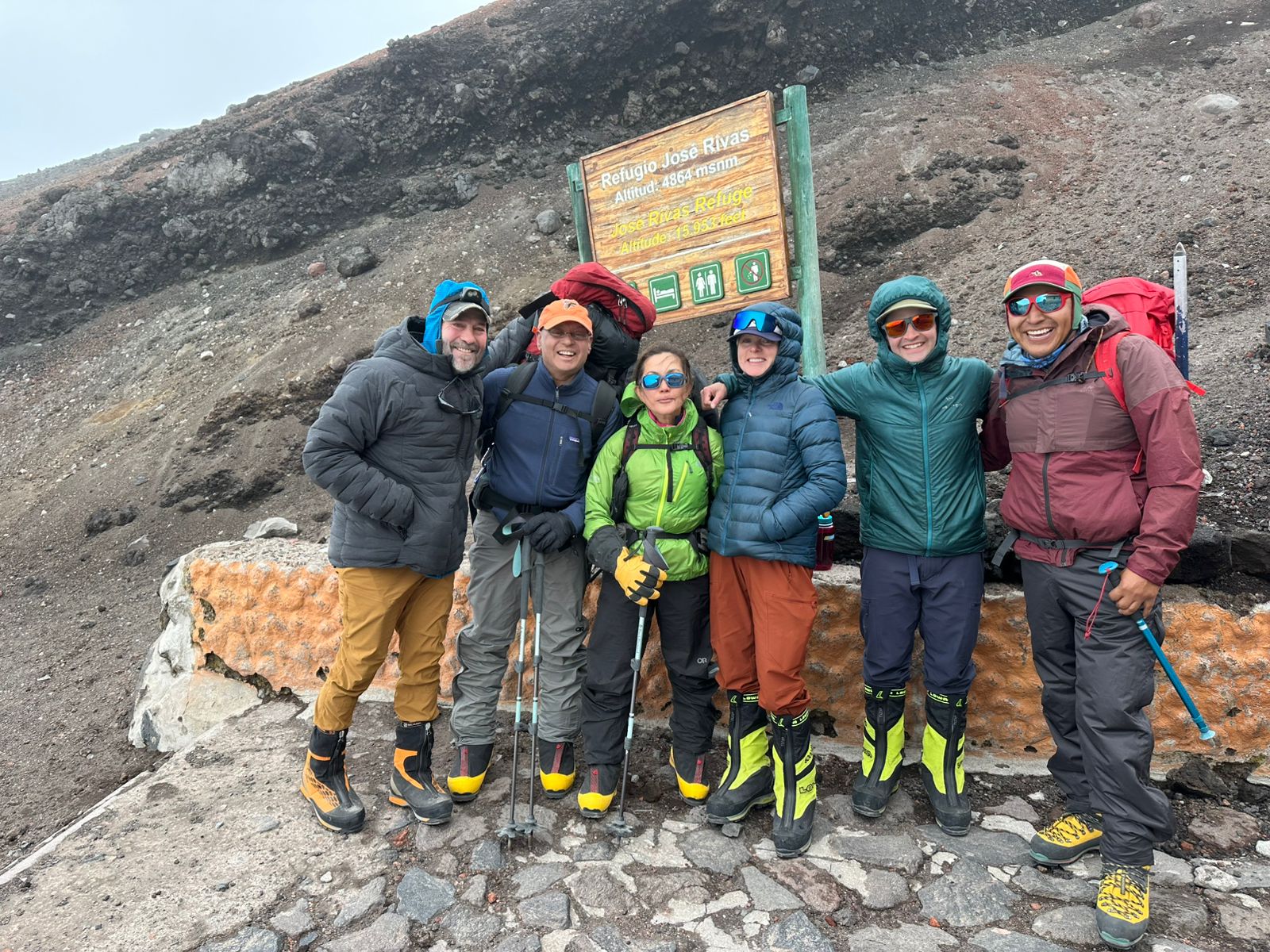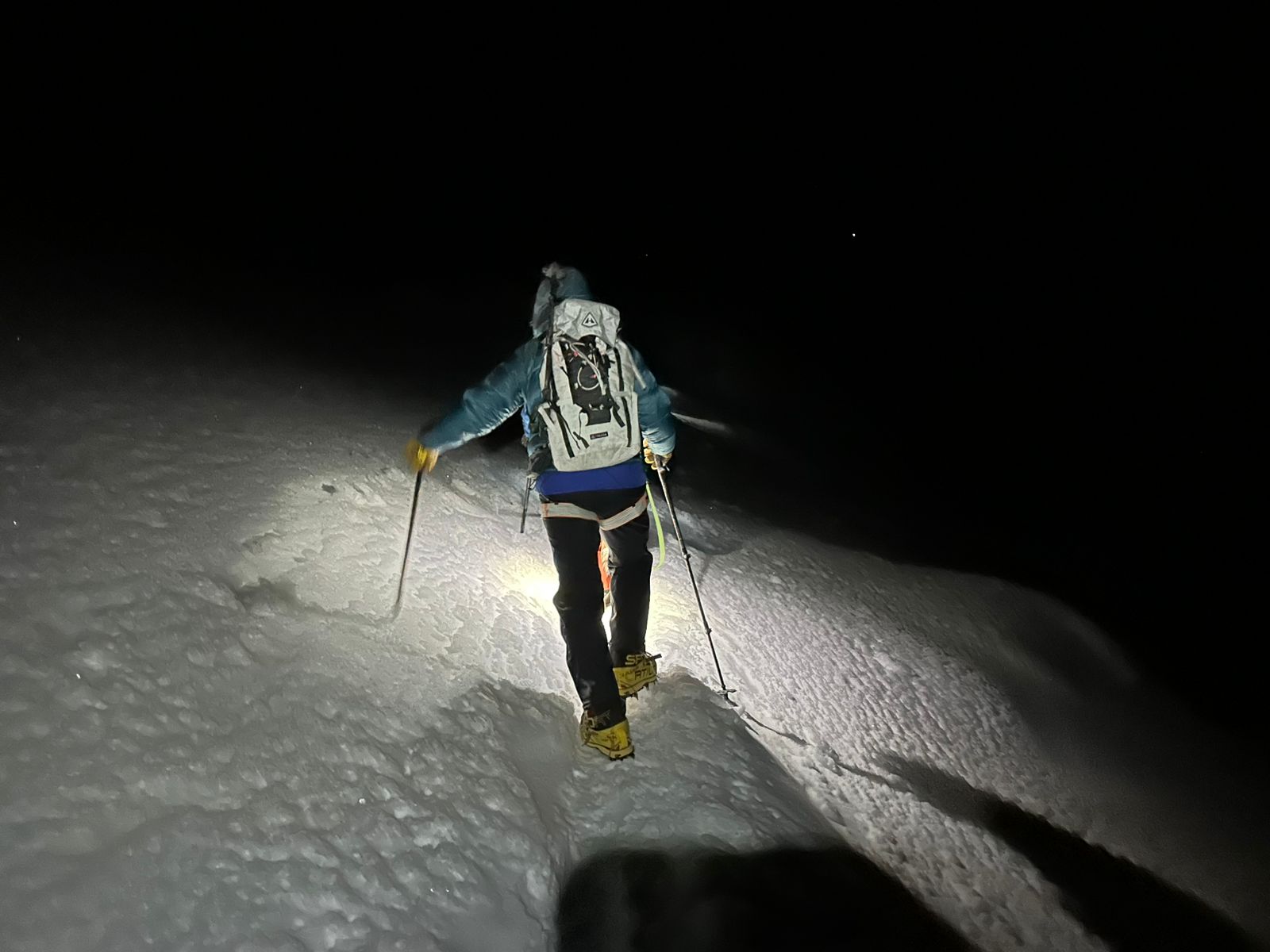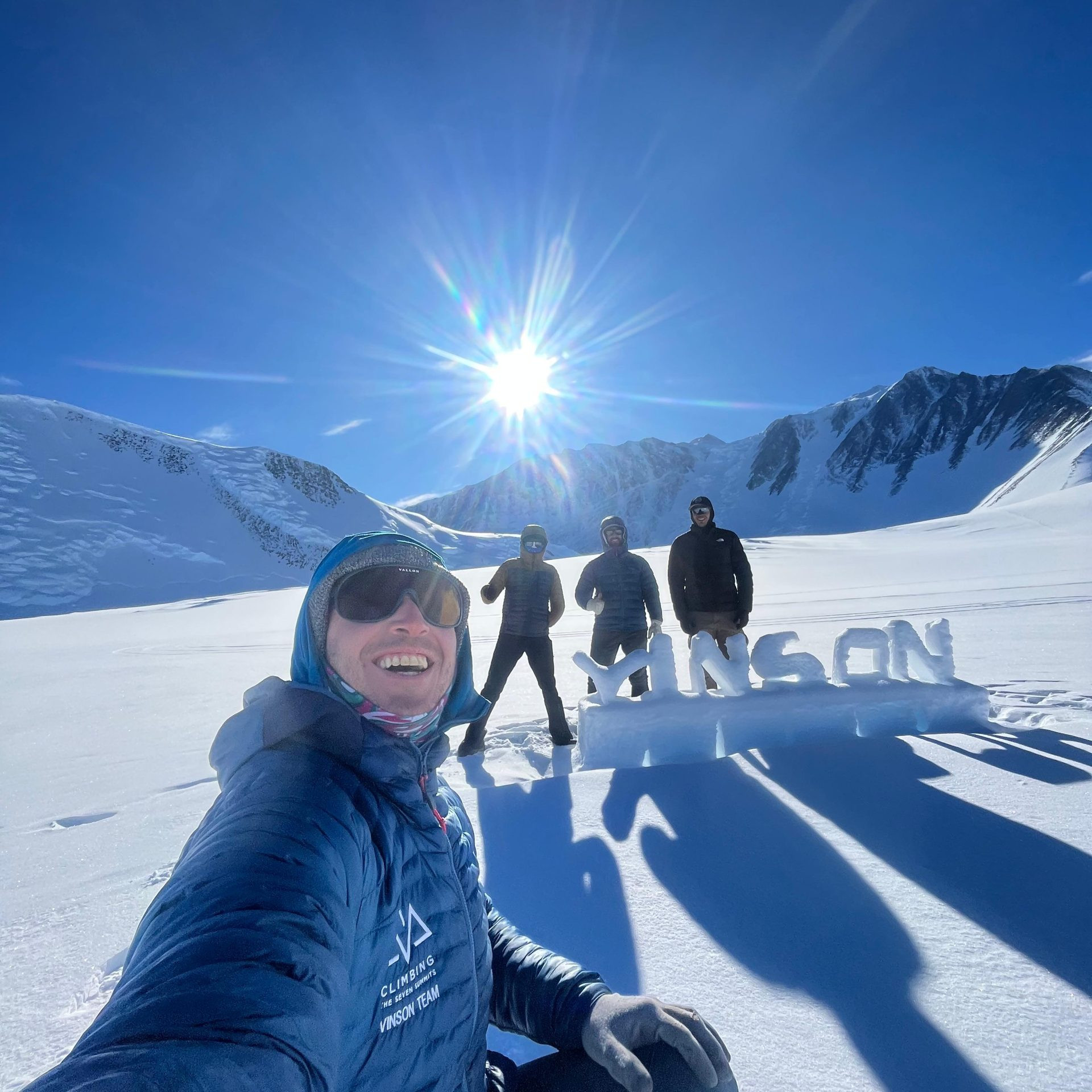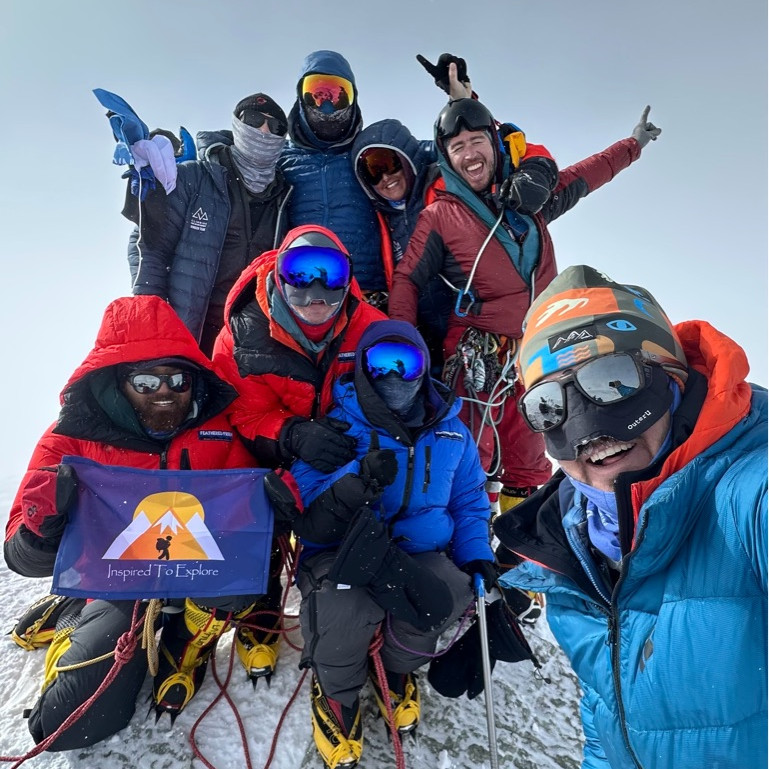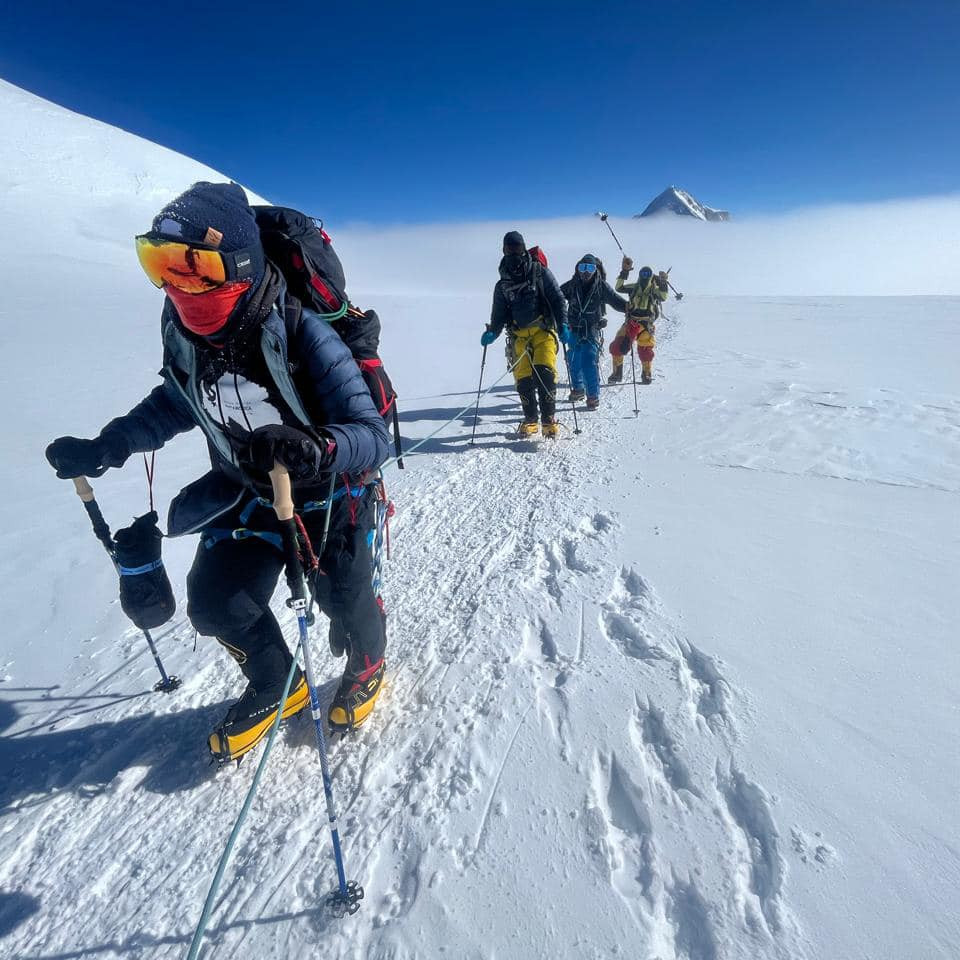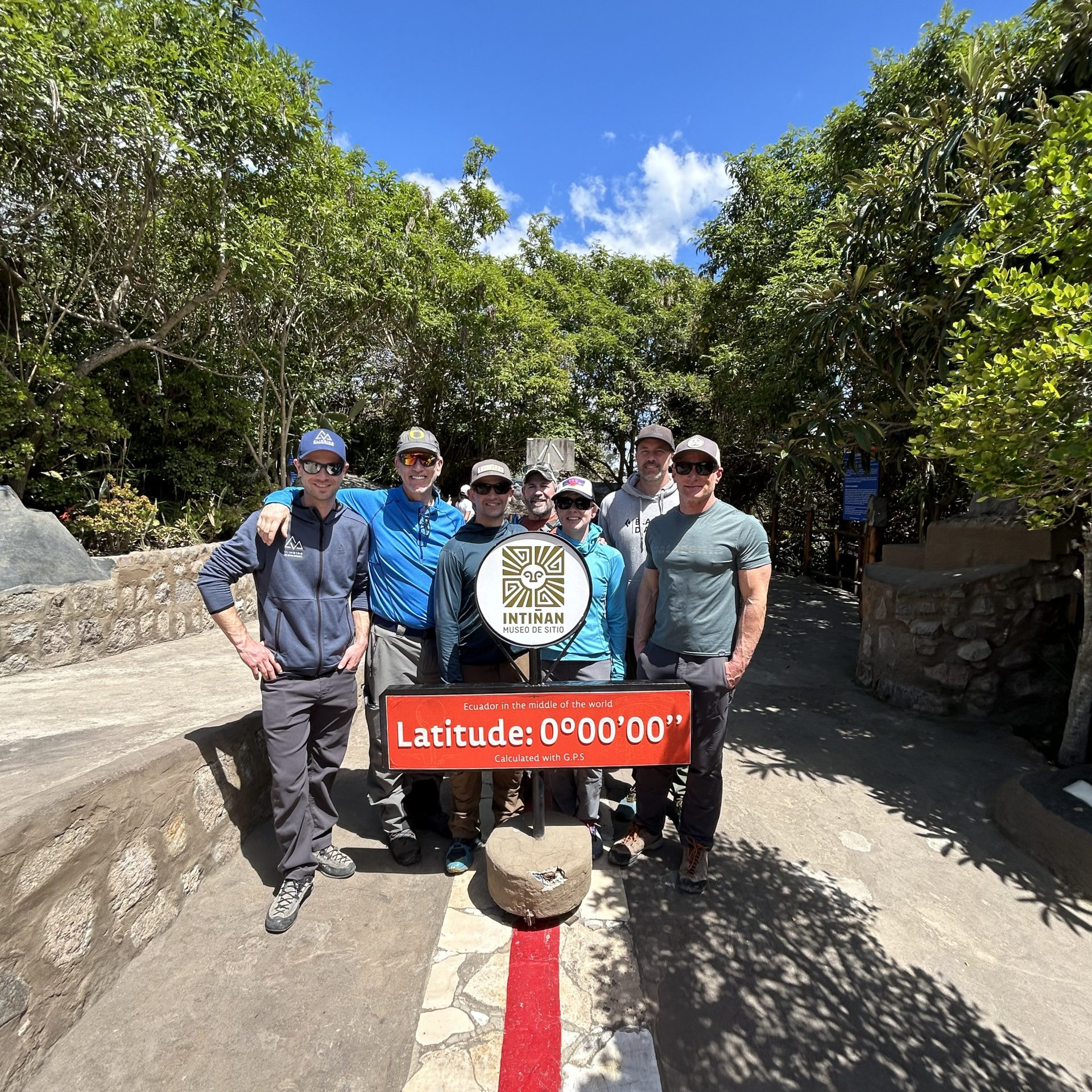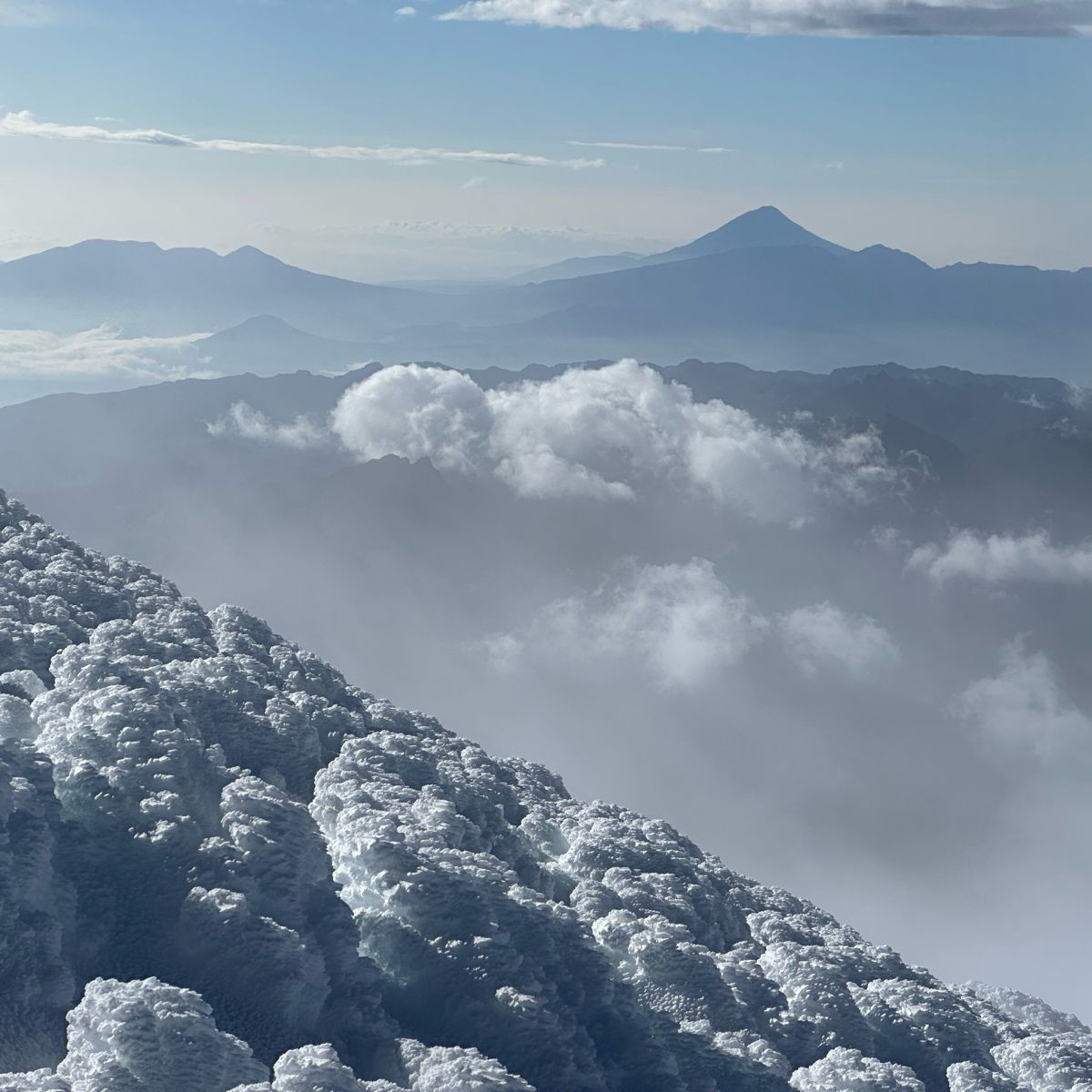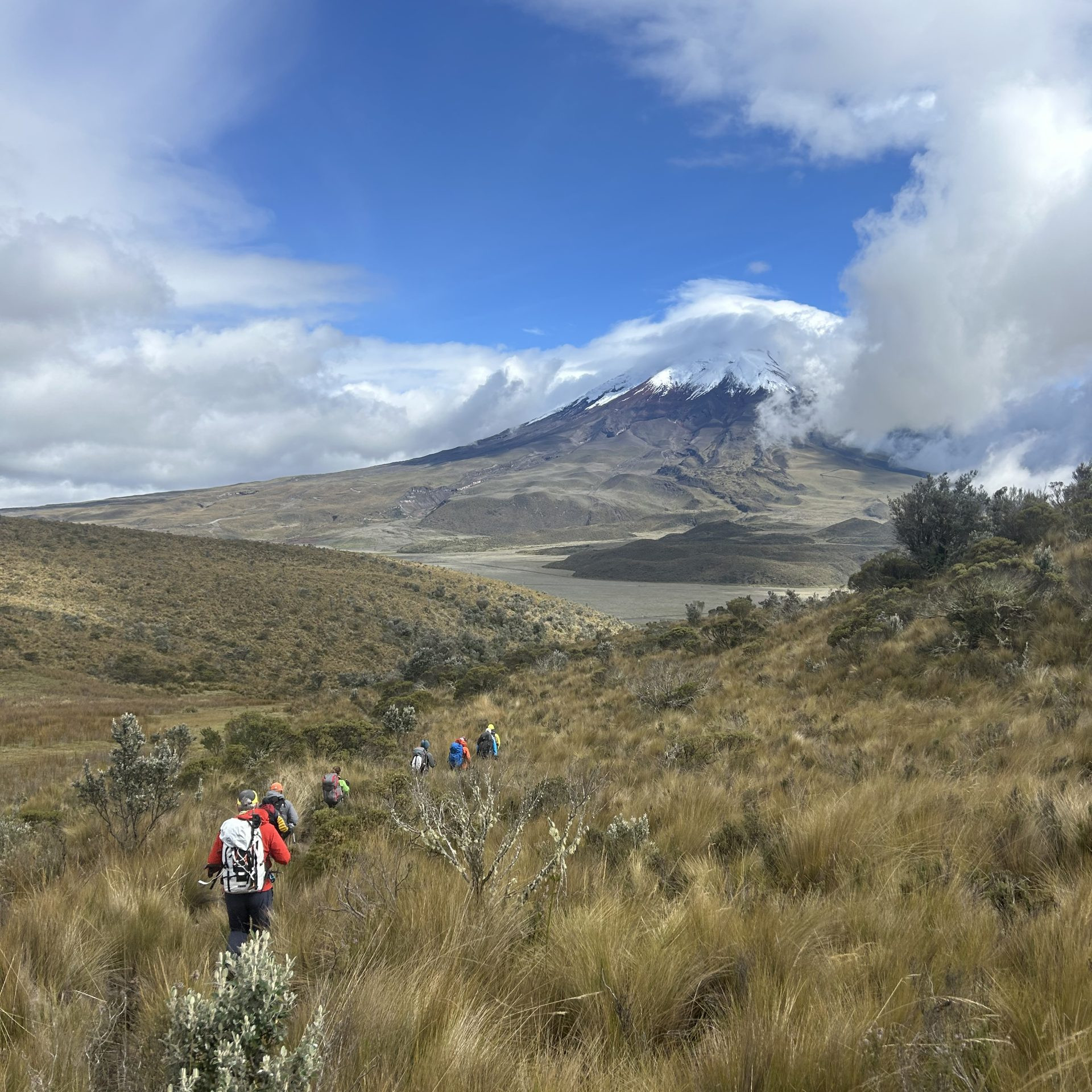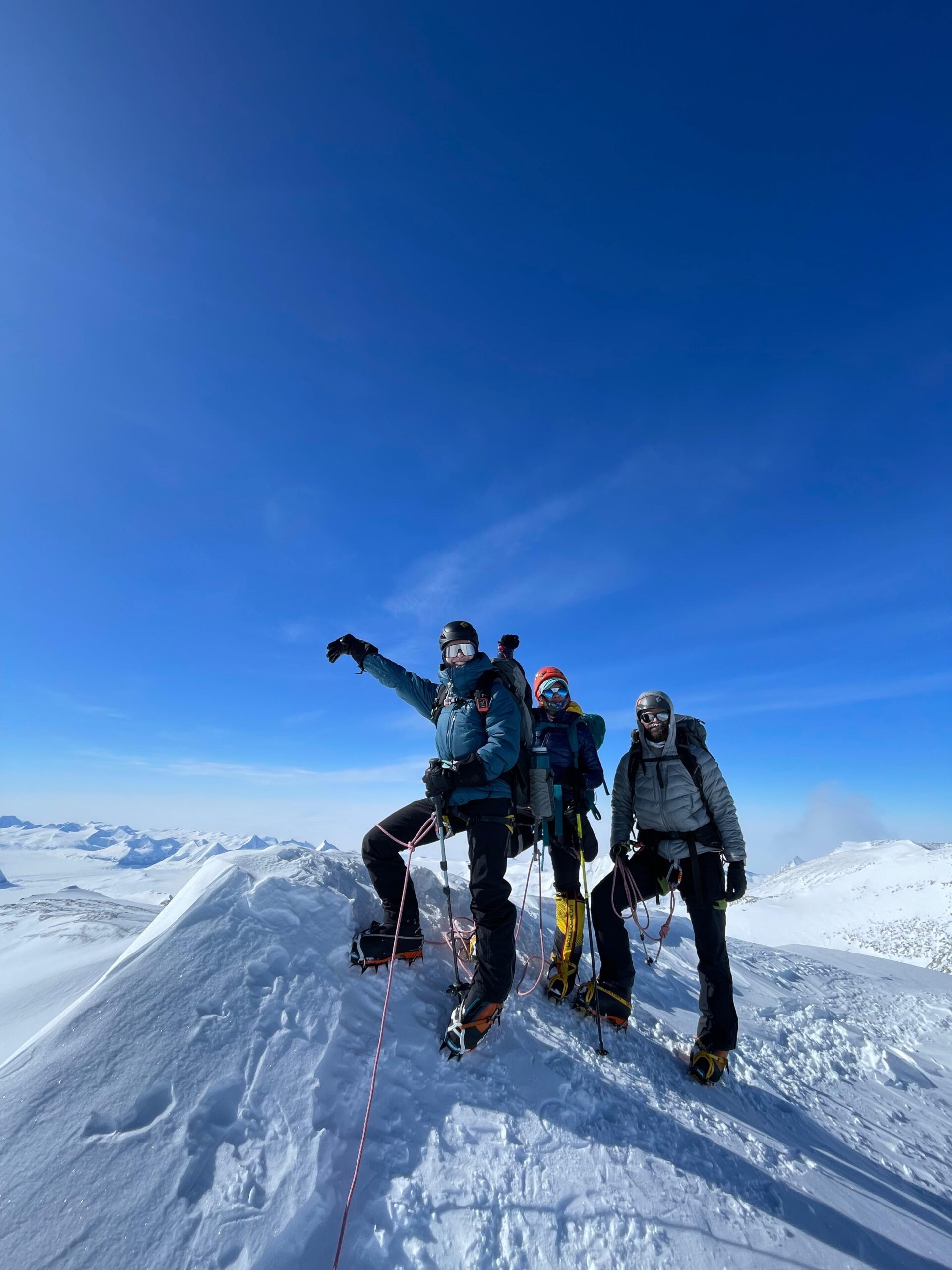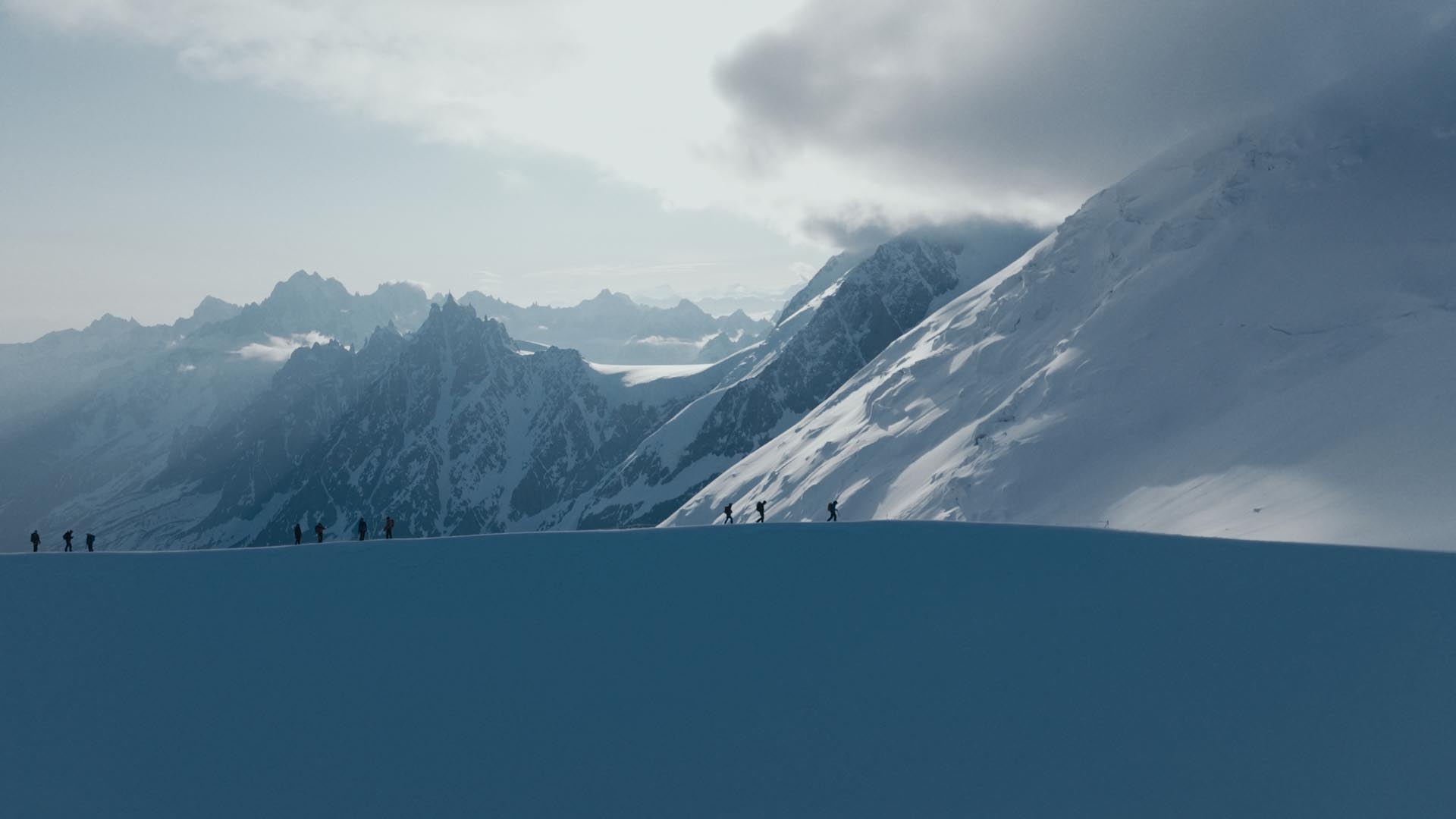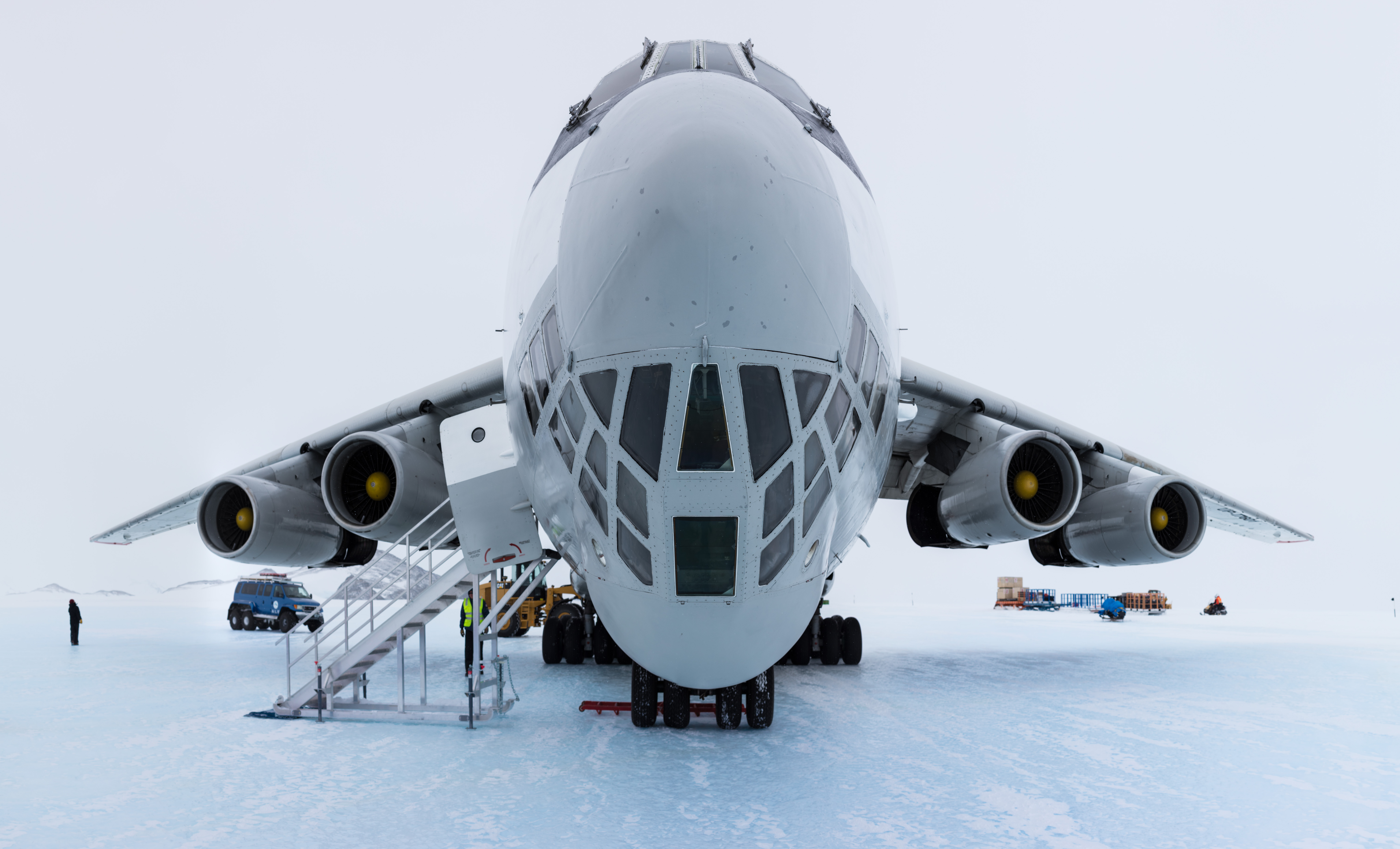Camp Two on Aconcagua
Our Ecuador team wrapped their adventure with a final celebratory dinner before bidding farewell and heading home. A huge thank you to everyone for making this an unforgettable trip!
Meanwhile, on Aconcagua, our team climb is off to a great start with a successful trek into base camp at Plaza Argentina. Followed by load carriers and moves to Camp 1 and Camp 2. Everyone is feeling strong, and we are excited to continue sharing updates on their progress. Here are a few shots from CTSS guide Lucas:
Our private climbers on Aconcagua are also making great progress! The team has reached Camp 2 and is taking a well-earned rest day while keeping a close eye on the forecast as they prepare for their summit bid. Here are a few photos from CTSS guide Andres:
News from South America
Our Ecuador team had a great time on Chimborazo with excellent weather. This morning Toni, Marc and Daniel stood on top with guide Luke and Edgar, congratulation's team! They are back safe at high camp and starting to head back to Quito for a celebration dinner, before heading home.
Meanwhile on Aconcagua, our private team of Terry S & Guide Andres made the trek into base camp and are having a great time! They are starting to carry loads up to Camp 1 and feeling good!
Our Aconcagua team climb have started their trek into base camp and are moving well. One of our Guides Max sent over these photos of the first day of the trek in. Today our speed ascent climbers arrive in Mendoza where they will gear check, finalize their permits, and get ready to helicopter into base camp tomorrow to meet the rest of the team!
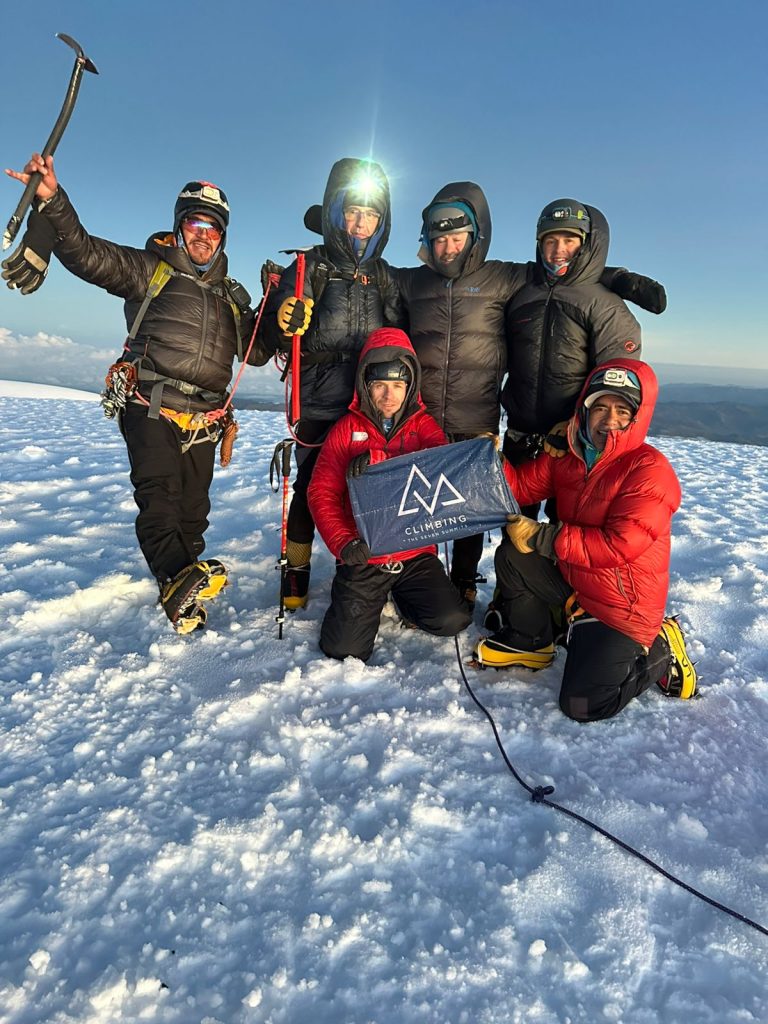

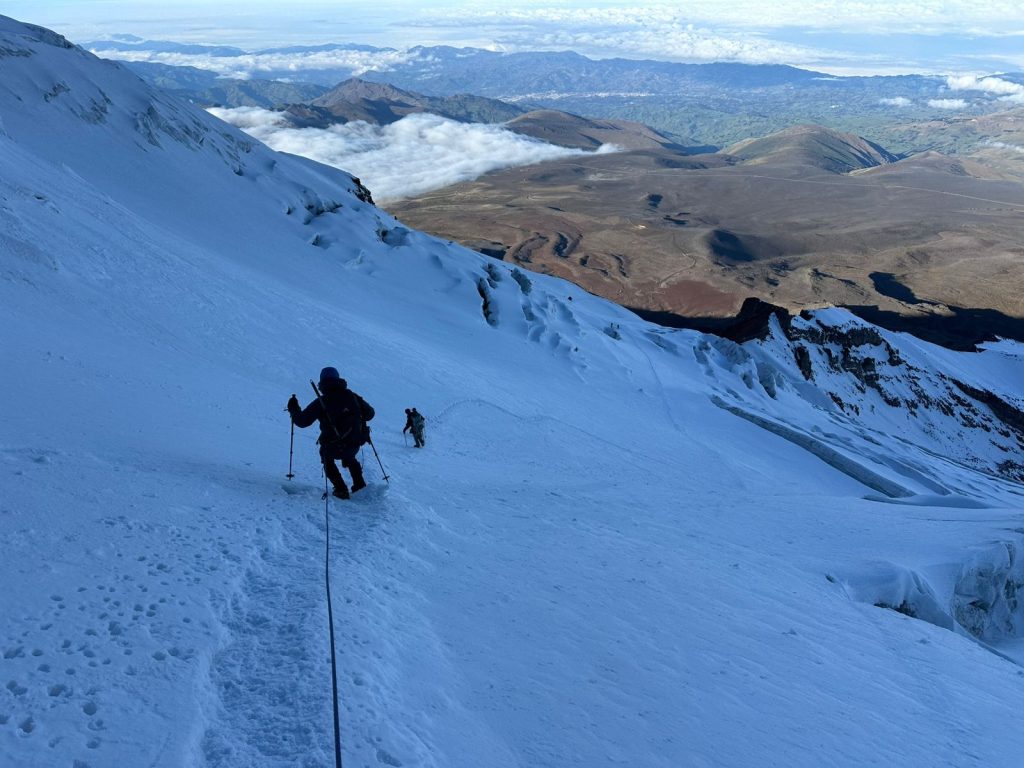
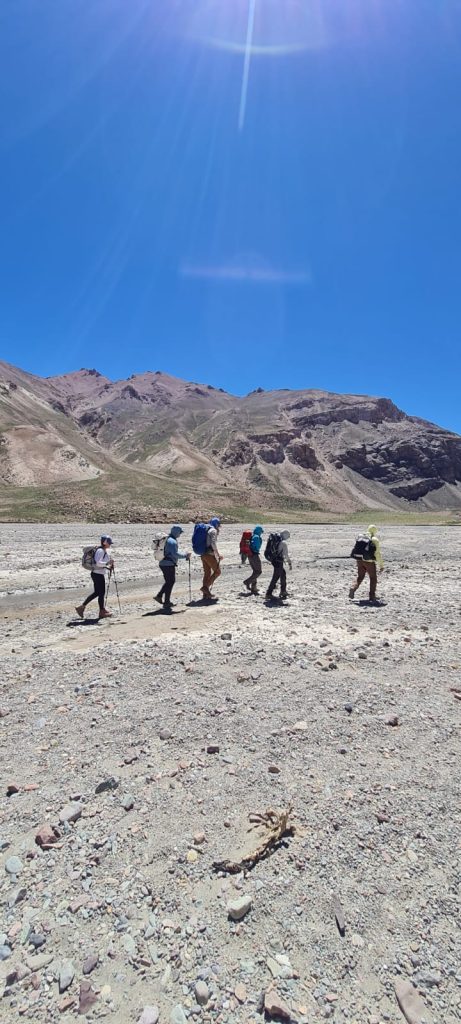


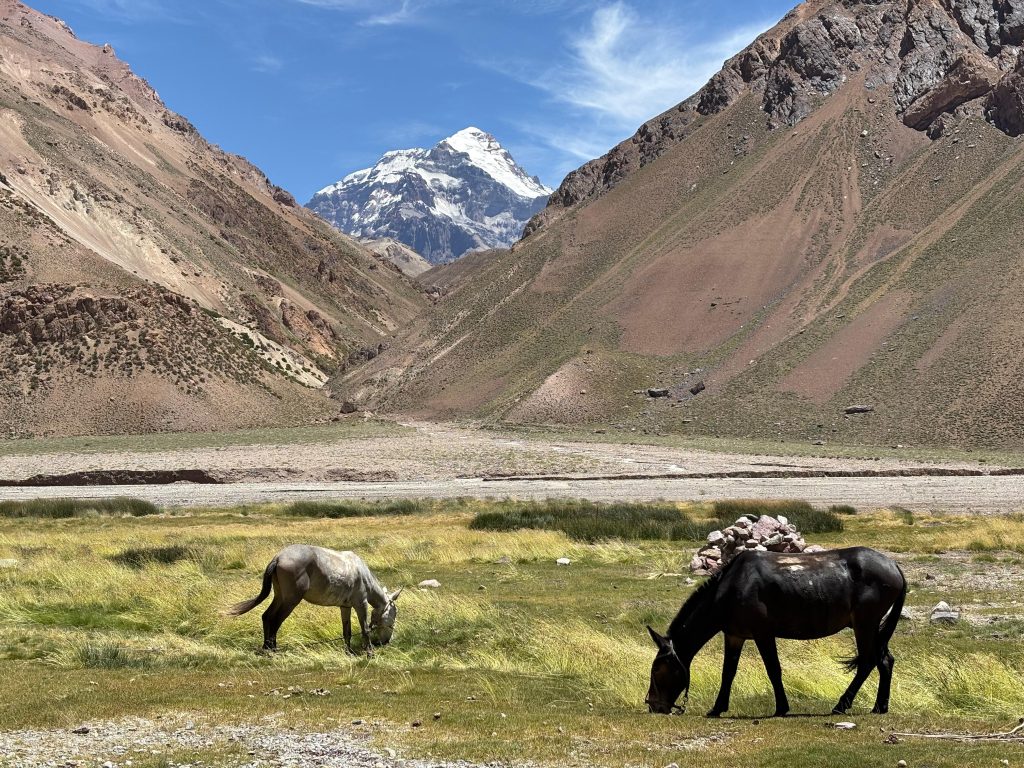
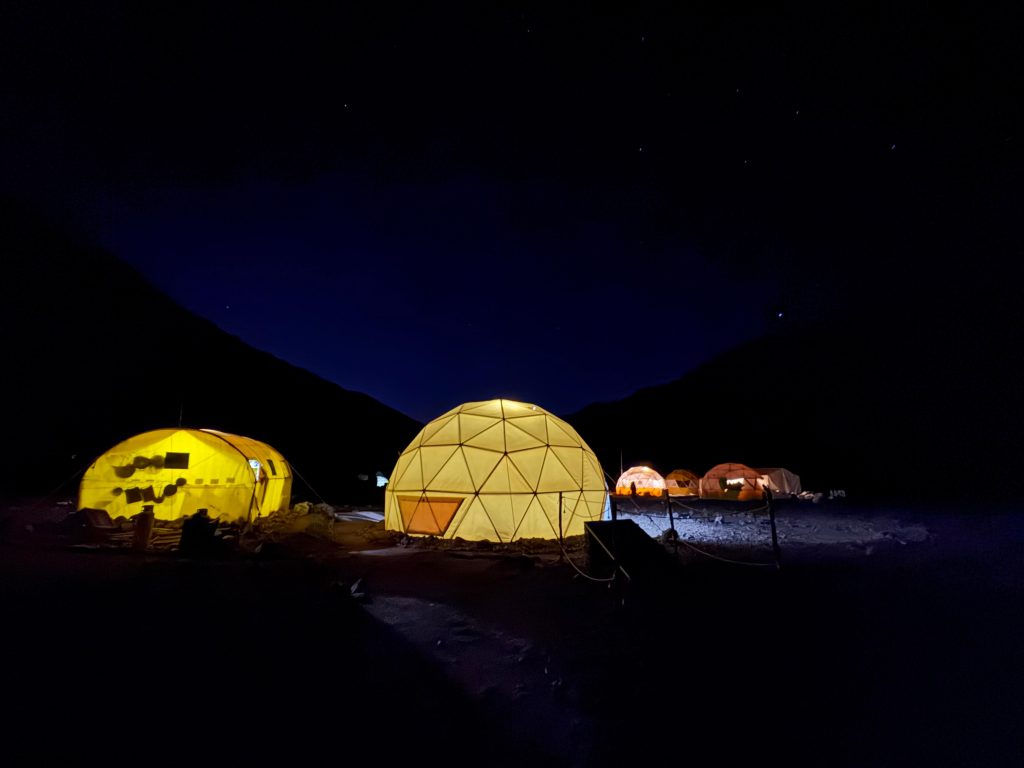
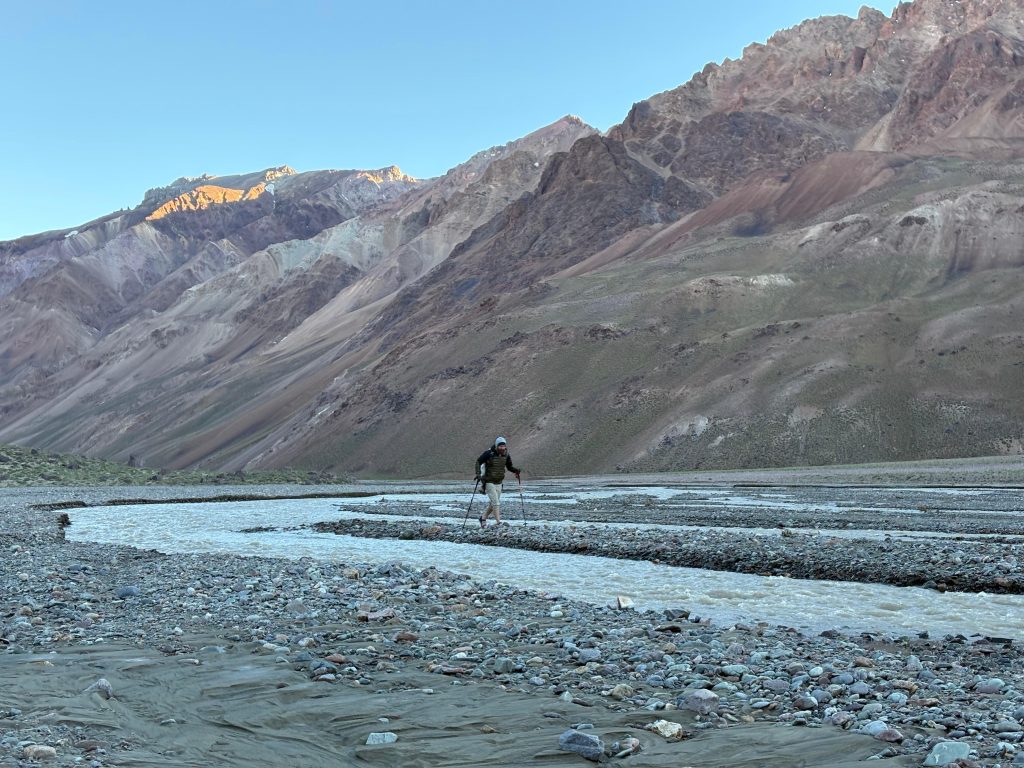
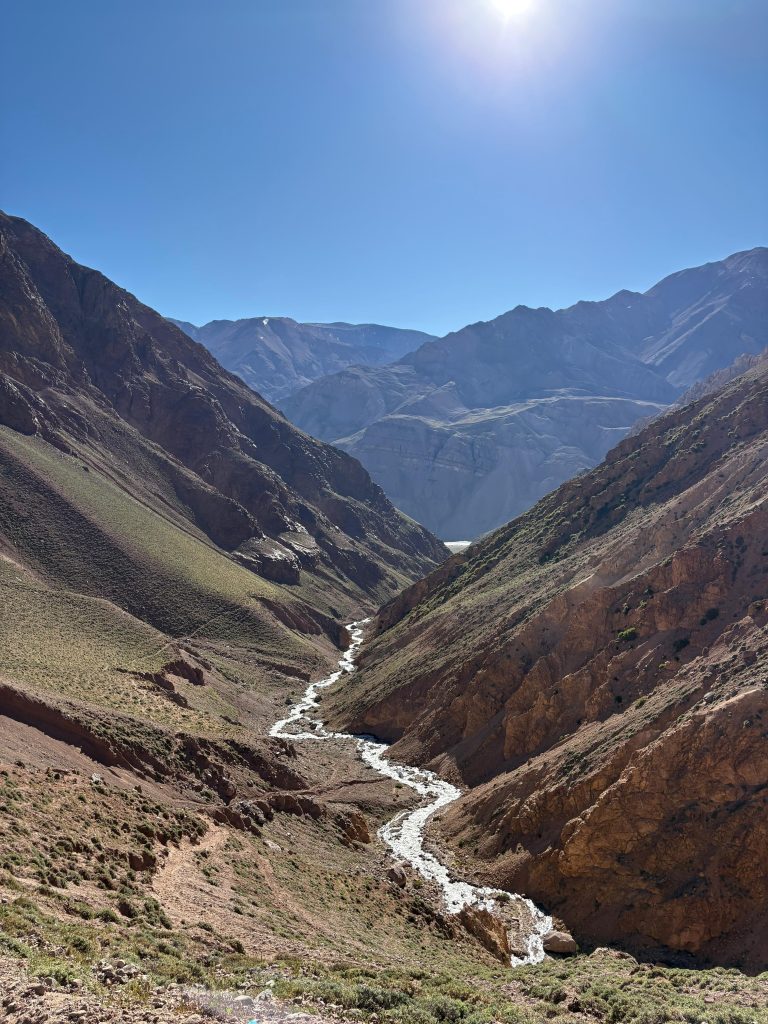
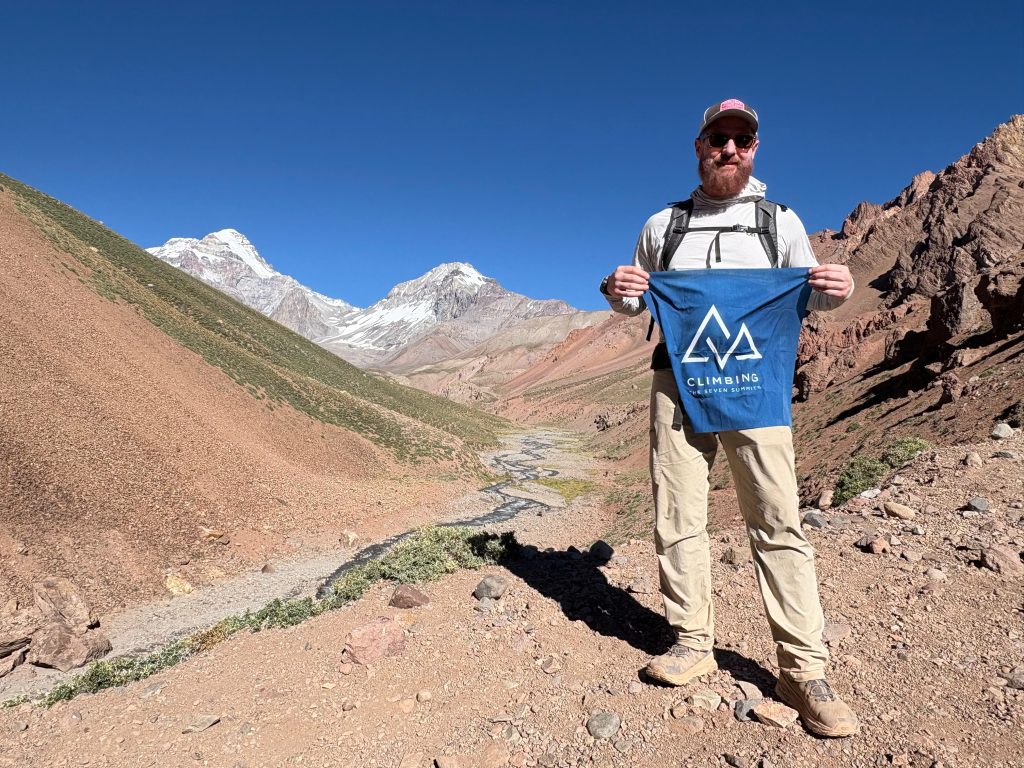
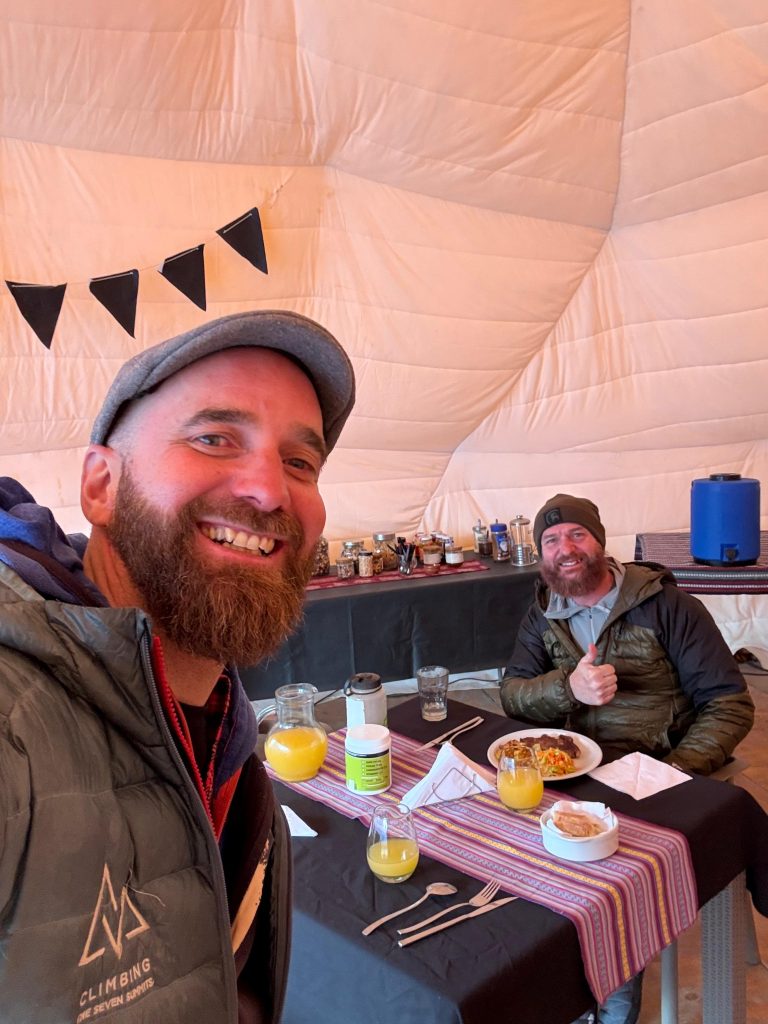
Success on Cayambe for CTSS
Our Ecuador Volcanoes team has been busy! Over the weekend, the team made their way to Cayambe (18,996 feet) for their second summit bid. With expert guide leadership, high spirits post-Cotopaxi, and excellent weather following the team, the summit window for Cayambe arrived, and the team made their successful summit.
Congratulations to the following team members for summiting:
- Chelsey M.
- Marc M.
- Toni B.
- Chad J.
- Daniel B.
- Kyle R.
- Rajesh P.
- Mavic R.
- Guide Edgar P.
- Guide Luke R.
Cayambe is the only major mountain in the world whose summit straddles the Equator, and it stands proudly as Ecuador’s third tallest peak.
The team is now headed to Thermas de Papallacta to soak in the hot springs and celebrate their success before some of the team continues onto Chimborazo (20,548 feet), our add-on climb available for this expedition.
Chimborazo, or Chimbo, is Ecuador’s tallest peak, and given its position on the planet’s equatorial bulge, it’s also the farthest point from the center of the Earth! We highly recommend climbing Chimbo as it’s a great way to make the most of your acclimatization, training, investment, and time in Ecuador.
Photos from CTSS Guide Edgar P. and Luke R.
Final Teams on Aconcagua
Climbing season is well underway in Aconcagua, and our private team kicked off their expedition with a gear check and dinner in Mendoza, Argentina, before starting their journey to Plaza Argentina (base camp during their ascent) over the weekend.
On the heels of our private team, our final team climb has successfully landed and convened in Mendoza. Shortly after arriving, the team completed their gear checks, got their climbing permits, and traveled to Puente del Inca to start their trek. Tomorrow, the team will head to Plaza Argentina, which will also serve as the team’s base camp during the ascent.
Check-ins with our guides indicate that the entire team is psyched to start their climb of Aconcagua via the 360 Route (also called the False Polish Traverse).
Photo from CTSS Guide Andres G. (Private Climb)
Photos from CTSS Client Anirudh K. (Team Climb)
Cotopaxi Summits for Ecuador Volcanoes Team
Our Ecuador team spent yesterday practicing skills on Cotopaxi and preparing for a summit attempt. Today, the team got an alpine start and put their skills to use during their successful summit bid on Cotopaxi (19,347 feet)!
Congratulations to the following climbers who stood on top:
-
Chelsey M.
-
Marc M.
-
Toni B.
-
Chad J.
-
Kevin S.
-
Daniel B.
-
Kyle R.
- Guide Edgar P.
- Guide Luke R.
Cotopaxi is one of the world’s highest active volcanoes and Ecuador’s second-highest summit. Since 1738, this perfectly symmetrical cone volcano has erupted more than 50 times, most recently in 2022. The recent flurry of activity also meant that Cotopaxi was closed for more than a year, but early last year, the peak stabilized and reopened for climbing.
Next for the team will be a summit attempt on Cayambe (18,996 feet).
Photos from CTSS Guide Edgar P.
That's a Wrap for our Vinson Season!
Good news from Antarctica: Our team got confirmation that they will fly off the ice today, back to Punta Arenas, Chile, and start their journey home! That’s officially a wrap on a fantastic season on Vinson for us, with 100% summit success for all of our climbers!
Here are a few shots from our 2024/2025 season:
Meanwhile, in Ecuador, the team spent time exploring Quito a bit with a trip up the Teleferiqo and a short acclimatization hike. This was followed by a trip to the equator, where they balanced some eggs on the head of a nail and watched water swirl in opposite directions in a toilet bowl.
Yesterday, the entire group climbed to the summit of Rumiñahui to acclimatize; despite some rainy weather, they had a great time!
Today, they are doing skills training on the lower slopes of Cotopaxi to prepare for their upcoming climb!
Over the weekend...
Congratulations to our 3rd and final Vinson team who summited in style yesterday. After lengthy weather delays their patience paid off and they all stood on the summit!
They are now making their way back down the mountain and starting their journey home from Vinson Base Camp. We are crossing our fingers for good weather for them to fly back to Union Glacier Camp first and then onward off the continent and back to Punta Arenas, Chile.
Meanwhile, our Ecuador team convened in Quito for the start of their trip! Today they are doing gear checks and guide briefings in the morning and heading up for some acclimatization on the Teleférico de Quito before taking an Equator tour!
Photos CTSS archives
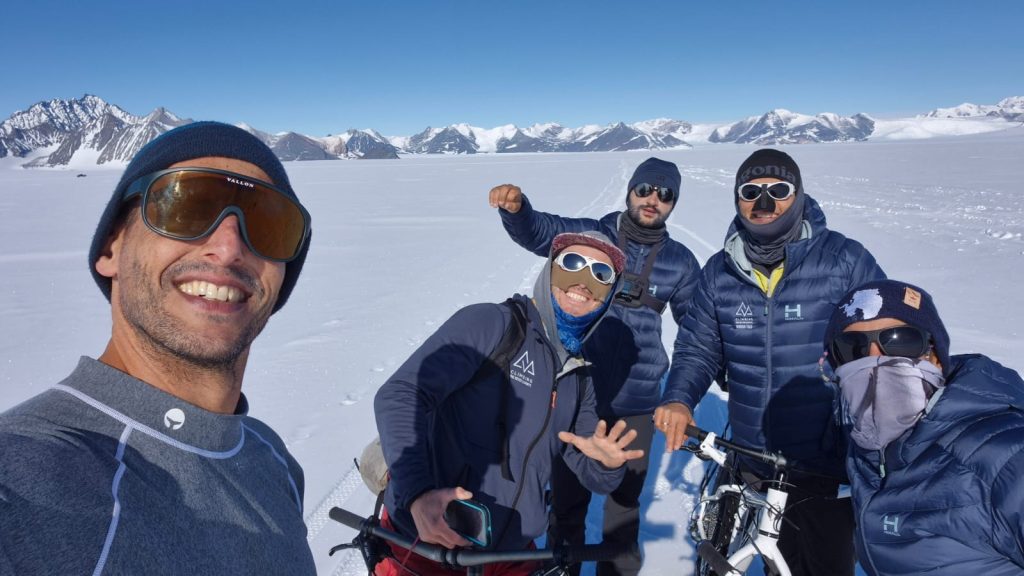
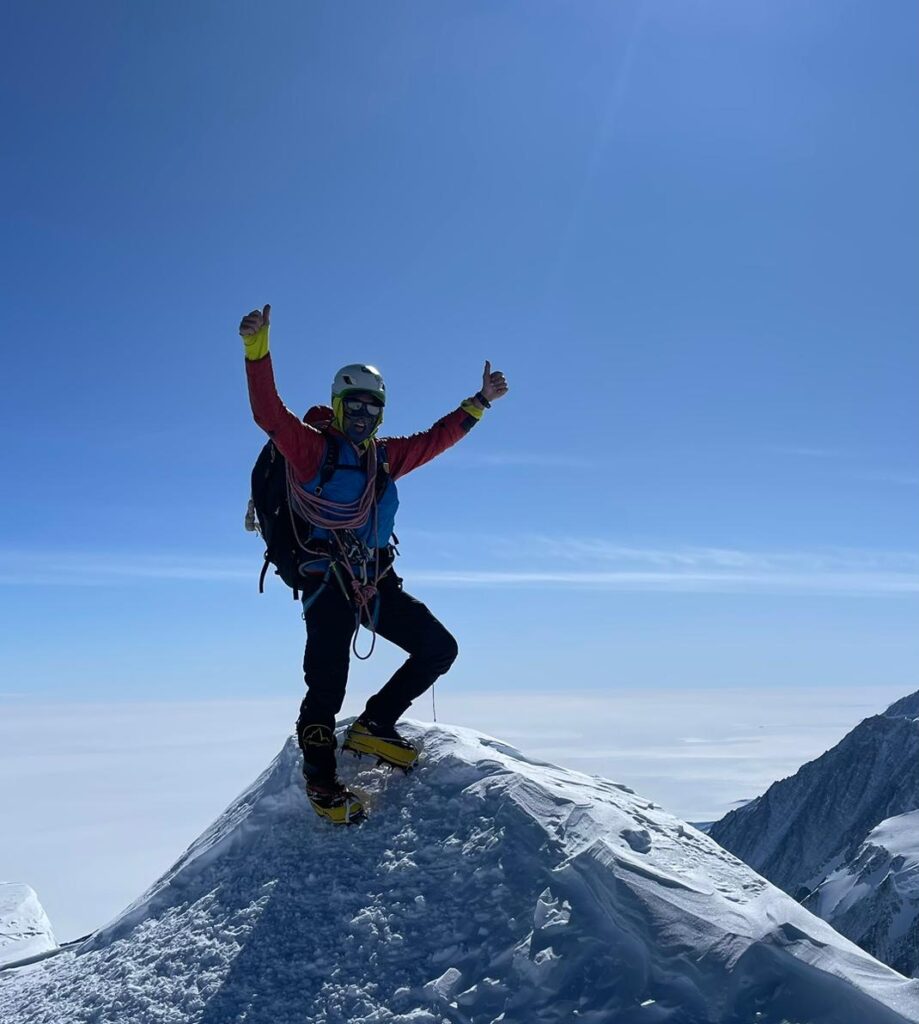
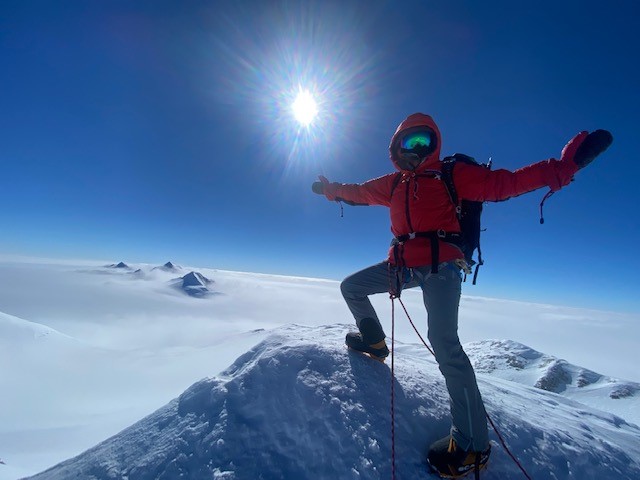

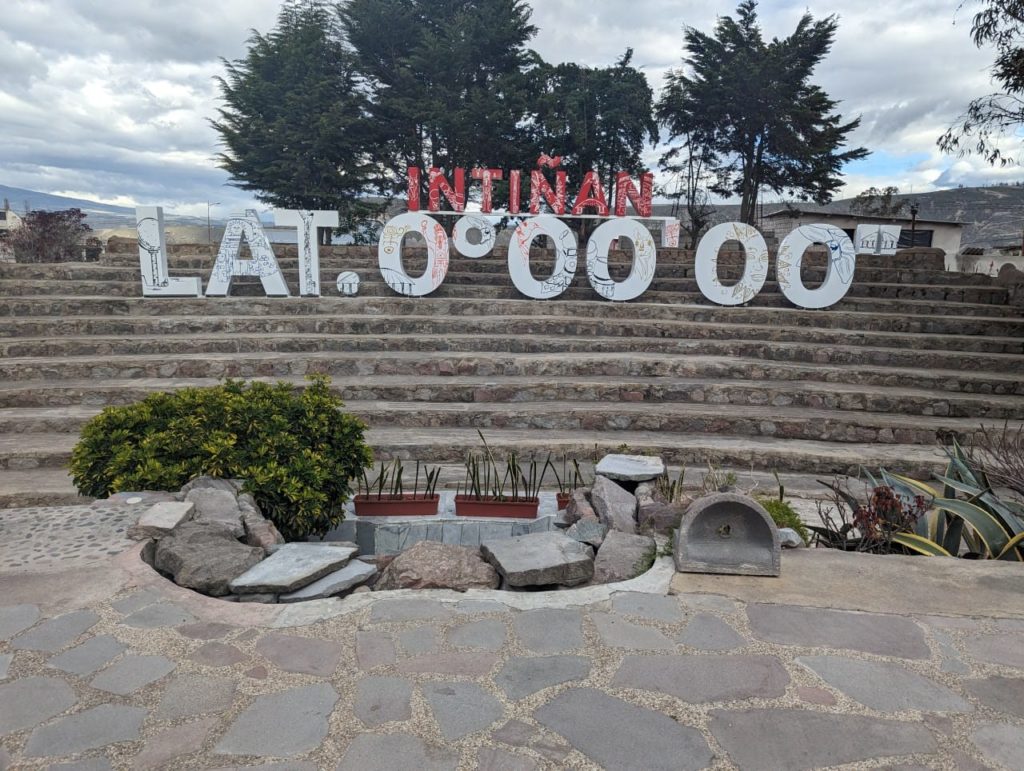


Mont Blanc Private Climb
Private Mont Blanc Expedition
Contact us for pricing, dates, and availability.
Our Mont Blanc expeditions run from the end of June through September to take advantage of the best weather and most favorable summit conditions. Whether you’re looking for a group climb or want a customized private climb to expand your skill set, we can arrange an expedition that fits your style and timeframe.
- If our team climb dates don’t work for you, or you would like a private trip and private guide, we also build custom itineraries for many of our climbers.
- For all private Mont Blanc expeditions, you must book as far in advance as possible, ideally 6 or more months before your desired dates. Space is limited in the mountain huts we use for this expedition and sell out each season.
- You can climb Mont Blanc as a stand-alone climb or dovetail it with other climbs in the Alps, including the Matterhorn and the Eiger. Together, Mont Blanc, the Matterhorn, and the Eiger make up the Alpine Big Three, the ultimate trilogy for any mountaineer.
Our Mont Blanc expeditions offer a challenging ascent, requiring physical fitness, technical climbing skills, and mental endurance. It’s an infamous and highly sought-after summit that sits on the border of France and Italy with sweeping views that have been enticing climbers for years.
Itinerary:
This itinerary is only a rough estimate and will be determined by weather and conditions. This is adventure travel, meaning things rarely go as planned, and this schedule will likely change. Climbers need to be adaptable and positive.
We always recommend climbers arrive in Chamonix one day early to avoid travel delays or issues with lost baggage. Added expenses (hotel/food/sightseeing) of this extra day are the client’s responsibility.
- Day 1: Arrival day, gear checks
- Day 2: Train and acclimatize on the Mont Blanc range (ex. Aiguille du Midi)
- Day 3: Train and acclimatize on the Mont Blanc range (ex. Punta Hellbronner)
- Day 4: Begin Mont Blanc climb (Les Houches to Tête Rousse Hut)
- Day 5: Summit day (Tête Rousse Hut to Goûter Hut)
- Day 6: Return to Chamonix
- Day 7: Departure day
Our expeditions are designed to be fully inclusive, except for some services/items of a personal nature like flights, gear, insurance. Here’s a detailed list so you know what to expect
Included in the Mont Blanc Expedition
- IFMGA Mountain Guide at a 2:1 guide-to-client ratio for your summit day and a 4:1 ratio for your training days.
- Summit attempt of Mont Blanc plus 2 training days in the Mont Blanc range
- All accommodations, including 4 nights at a hotel in the Chamonix Valley, as well as 2 nights at mountain huts
- All meals, including a team dinner on the first night in Chamonix. You will need to bring your own selection of snacks for fuel during the training days and summit climb. We recommend a variety of your favorite snacks, enough for 5 snack breaks at 300-400 calories per break.
- Transport within the itinerary, including cable cars and trains
- All group gear, including mountaineering tents, cooking gear, stoves, ropes, etc.
- Group first aid equipment
Excluded from the Mont Blanc Expedition
- Flight costs
- Airport transfers from the Geneva Airport (Switzerland)
- Snacks and drinks during the expedition. You will need to bring your own selection of snacks for fuel during the training days and summit climb. We recommend a variety of your favorite snacks, enough for 5 snack breaks at 300-400 calories per break.
- All personal climbing equipment is the responsibility of the client.
- In the event of a rescue, evacuation, or early departure from the group, any rescue expenses or excess expenses above and beyond our normal trip costs, including transport, hotels, evacuation, flight changes, and gear shipping, are the responsibility of the client.
- Guide tips (customary, but optional)
- Costs incurred as a result of events beyond the control of CTSS above and beyond the normal expedition costs
- Required trip insurance policy (for trip cancellation, interruption, rescue & evacuation, medical treatment, repatriation, etc.)
Mont Blanc Team Climb
Mont Blanc Team Climb: $6,495 USD
Dates:
- June 28 – July 4, 2026
Our Mont Blanc expeditions run from the end of June through September to take advantage of the best weather and most favorable summit conditions. Whether you’re looking for a group climb or want a customized private climb to expand your skill set, we can arrange an expedition that fits your style and timeframe.
- If these dates don’t work for you, or you would like a private trip and private guide, we also build custom itineraries for many of our climbers.
- You can climb Mont Blanc as a stand-alone climb or dovetail it with other climbs in the Alps, including the Matterhorn and the Eiger. Together, Mont Blanc, the Matterhorn, and the Eiger make up the Alpine Big Three, the ultimate trilogy for any mountaineer.
Our seven-day Mont Blanc expeditions offer a challenging ascent, requiring physical fitness, technical climbing skills, and mental endurance. It’s an infamous and highly sought-after summit that sits on the border of France and Italy with sweeping views that have been enticing climbers for years.
Itinerary:
This itinerary is only a rough estimate and will be determined by weather and conditions. This is adventure travel, meaning things rarely go as planned, and this schedule will likely change. Climbers need to be adaptable and positive.
We always recommend climbers arrive in Chamonix one day early to avoid travel delays or issues with lost baggage. Added expenses (hotel/food/sightseeing) of this extra day are the client’s responsibility.
- Day 1: Arrival day, gear checks ( - / - / D)
- Day 2: Train and acclimatize on the Mont Blanc range, e.g. Aiguille du Midi (B / L / D)
- Day 3: Train and acclimatize on the Mont Blanc range, e.g. Punta Hellbronner (B / L / D)
- Day 4: Begin Mont Blanc climb (B / L / D)
- Day 5: Summit day (B / L / D)
- Day 6: Return to Chamonix (B / L / D)
- Day 7: Departure day (B / - / -)
Our expeditions are designed to be fully inclusive, except for some services/items of a personal nature like flights, gear, insurance. Here’s a detailed list so you know what to expect
Included in the Mont Blanc Expedition
- IFMGA Mountain Guide at a 2:1 guide-to-client ratio for your summit day and a 4:1 ratio for your training days.
- Summit attempt of Mont Blanc plus 2 training days in the Mont Blanc range
- All accommodations, including 4 nights at a hotel in the Chamonix Valley, as well as 2 nights at mountain huts
- All meals, beginning with a team dinner on the first night in Chamonix and concluding with breakfast on the final day. You will need to bring your own selection of snacks for fuel during the training days and summit climb.
- Transport within the itinerary, including cable cars and trains
- All group gear, including mountaineering tents, cooking gear, stoves, ropes, etc.
- Group first aid equipment
Excluded from the Mont Blanc Expedition
- Flight costs
- Airport transfers from the Geneva Airport (Switzerland)
- Snacks and drinks during the expedition. You will need to bring your own selection of snacks for fuel during the training days and summit climb. We recommend a variety of your favorite snacks, enough for 5 snack breaks at 300-400 calories per break.
- All personal climbing equipment is the responsibility of the client.
- In the event of a rescue, evacuation, or early departure from the group, any rescue expenses or excess expenses above and beyond our normal trip costs, including transport, hotels, evacuation, flight changes, and gear shipping, are the responsibility of the client.
- Guide tips (customary, but optional)
- Costs incurred as a result of events beyond the control of CTSS above and beyond the normal expedition costs
- Required trip insurance policy (for trip cancellation, interruption, rescue & evacuation, medical treatment, repatriation, etc.)
Summits on Orizaba and Patience on Vinson
We had an incredible weekend filled with milestones across two continents!
On January 16th, our private Orizaba team successfully reached the summit of Pico de Orizaba, the highest peak in Mexico and the tallest volcano in North America. The team has safely descended and is already on their way home, feeling proud and accomplished. A huge congratulations to the entire team for their hard work!
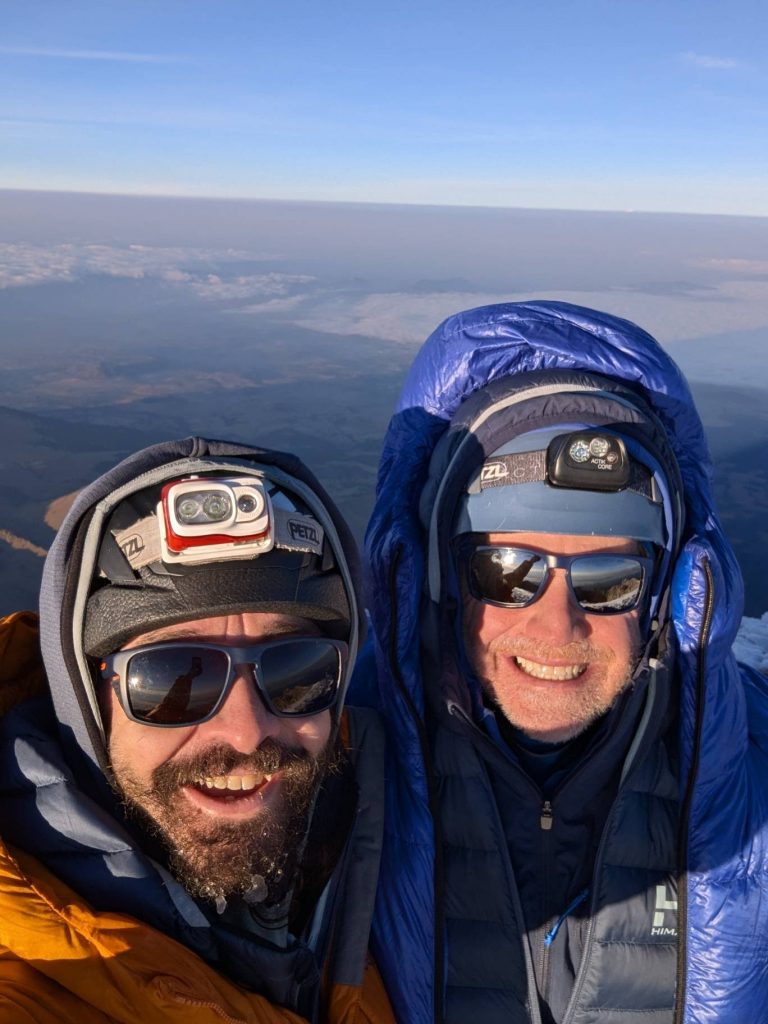
Meanwhile, in Antarctica, our Vinson teams have been demonstrating the ultimate mountaineering skill: patience. The weather finally cooperated, allowing significant progress over the weekend. Here are the updates from Union Glacier:
- Our second Vinson team of the season returned to Punta Arenas, Chile, on Saturday after a successful expedition.
- Our third Vinson team of the season waited over a week for conditions to clear and were finally able to fly to Vinson Base Camp. They were greeted with a stunning sunny day and wasted no time, heading straight for Camp 1.
- Vinson Team Three is resting at Camp 1 and preparing for their summit push in the coming days. Stay tuned for updates as they aim to stand on the roof of Antarctica very soon!
